FISH FARMING TECHNOLOGY
TAKING CONTROL OF WATER TREATMENT: The sustainable way
- Bringing nature to shrimp feeds: How can plant extracts contribute to disease management
-
Barramundi Resilience: Navigating Climate Challenges with Adaptability

- Innovative use in phytogenics

-
MEGATHREATS: Dangerous Trends and Implications for Aquaculture
International AquafeedVolume 26Issue 9September 2023 www.aquafeed.co.uk www.fishfarmingtechnology.net
SEp TEMBER 2023 Proud supporter of Aquaculture without Frontiers UK CIO

Find out more at: alltechcoppens.com Your fish feed specialist Ensure Working together to your fish thrive for a brighter future
Horace Greeley, editor of the New York Tribune, is widely credited with coining the phrase: ‘Go West, young man!’ in an 1865 editorial.
But much has changed in the past 160 years, so much so that the saying, when applied from an aquaculture perspective, should be: “Look North young person” - as that is where the future of aquaculture and fish farming is taking place.
AquaNor 2023 was back to its finest this past month, showing off the best in Norwegian and Scandinavian fish farming technologies among others. The four days in mid-August every second year did not disappoint with the weather swinging from sunshine to light rain and back again.
Unlike two years ago, when the organisers hosted a hybrid approach to offset the Covid restrictions facing international visitors and exhibitors, this year’s show was oversubscribed with many companies unable to find space within the Spektrum facility which plays host to the event in alternate years to NorFishing.
Two years ago, the in-person visitors still hit 16,600 with some 10,000 following the event and its conferences online. This year those figures were reached by the middle of the second day of the exposition and all from in-person attendees.
The active presence of the show is obvious in a town that is home to 180,000 people: with traffic build up in the town centre, full restaurants, and limited hotel and accommodation spaces for all those who want them.
In fact, many visitors flew in and out on the same day in order to take in what the event had to offer. After all, this event is showcasing all the latest technology the aquaculture industry has to offer which is suitable for many other farming systems and not just for high-priced salmon farming sectors.
To me AquaNor is similar to an F1 sports event, displaying the credentials of new technologies that are constantly being developed and trialled, while eventually trickling down into components and improvements in normal performance fish farming ‘vehicles’.
The trickle-down effect of AquaNor on the dispersal of technology globally cannot be understated. And this is why we focus our attention, especially around Fish Farming Technology, on this important event in the far North. It is also the reason why we have chosen to publish our International Aquafeed magazine monthly in Norwegian!
While the international attendance at AquaNor is obvious, and with much of the discussions taking place in English, it is the role of the magazine to encourage Norwegian companies to better appreciate that there are other fish farming operations out there that need their technologies and inputs.
This month we report on the show itself from page 52. Next month we will look closer at the technologies on display in our Fish Farming section of the magazine.
Roger Gilbert Publisher
We took the opportunity to promote and distribute several hundred copies of our Norwegian-language August 2023 edition and I must say all copies went! It is gratifying to know that the effort we put into providing an informative edition each month, with the good services of our technical editors Erik Hampel along with our other technical contributors, is being appreciated in the far North.
Also in this edition
WELCOME Going mobile
An unusual feature we are including in this edition appears on page 36. It’s looking at the 10 Mega Threads that will impact our future and may well have implications for the food sector and the production of aquaculture products.
This feature is based on a book authored by Nouriel Roubini and called ‘Megathreats: Ten dangerous trends that imperil our future and how to survive them.’
We have summarised what those threats are and draw them to your attention so that you might consider their possible impact as we move towards 2024. Of course, buying and reading the full book would be time well spent!
Our editor Professor Simon Davies has made a much-valued contribution this month in submitting an article on Utilising Marine Protected Areas to support sustainable aquaculture (page 30). He reports on the Monaco Blue Initiative and how MPAs can be effectively utilised to promote sustainable aquaculture.

We in the fish industry are becoming increasingly aware of our responsibilities when it comes to the impact farming might have on the environment and how sustainable our activities are over time. We will be reverting to this topic in future editions as aquaculture gears up to provide more food for human consumption while addressing this all-important aspect of sustainability.
And this is a topic also tackled by Matts Johansen, CEO of Aker BioMarine of Norway, in his article that says ‘Aquaculture must sustainably expand to feed future generations.’

There’s much of interest in this edition, but more to come next month. Please keep your suggestions and information coming through. I’d like to close by thanking our regular contributors for the efforts they put in each month to make this magazine a success.
When comparing ourselves with competing magazines on display at AquaNor last month I see that the industry is in great health as far as its means of communications are concerned and is being well served by magazines and publication like ourselves. As with every publication, we appreciate each and every reader! Enjoy this edition.
www.aquafeed.co.uk
– International Aquafeed and Fish Farming Technology
Welcome to my September editorial where we are now in our autumnal phase depending on where we are positioned on the globe. For us in the northern hemisphere, it is the closure of our summer but for those in the southern hemisphere it is seasonally spring and warming. The changing positioning of our planet and its tilting axis make us truly unique, allowing nature to take its course and for our aquaculture to be influenced and respond accordingly. We face constant challenges and with widespread heatwaves in Europe and USA, wildfires this year in such places as Hawaii (a leading aquaculture innovator), along with Greece and deluges of rain in California, so we must always be prepared for these outcomes.
In Asia aquaculture, however, is resilient and FAO data (2021) shows its continued massive presence and contribution to the seafood sector. As such, we cannot forget China. I am positive to see many excellent scientific papers generated in China being published in our leading peer-reviewed journals in aquaculture and specifically nutrition and feed technology. Research is increasingly including molecular genetics, Next Generation Sequencing (NGS), gene expression studies linked to nutrition and feeding. China is taking fish welfare and disease mitigation very seriously offering new platforms for fish vaccination, prophylactic approaches using locally available natural herbs and feed additives for direct applications within the industry. The biotechnology platform for functional feed supplements such as enzymes, prebiotics, probiotics, and phytobiotics is blooming as I have witnessed on several occasions in Aquatic China and Aquatic Asia meetings and trade shows.
China stands as a global leader in aquaculture, making a significant contribution to both its own domestic food security and the world's seafood supply. The country's extensive coastline, abundant freshwater resources, and a long history of aquaculture practices have positioned it as a major player. China's aquaculture industry is characterised by the cultivation of a diverse range of species, both in marine and freshwater environments. Some of the major species include:
Carp: Carp farming has been a traditional practice in China for centuries. Common carp, silver carp, bighead carp, and grass carp are extensively cultivated for their meat and contribution to the overall aquatic ecosystem. Shrimp and Prawn: China is a leading producer of shrimp and prawns, with species like whiteleg shrimp (Litopenaeus vannamei) and giant river prawn (Macrobrachium rosenbergii) being prominent.
Tilapia: Tilapia is a popular freshwater fish species farmed in China, known for its fast growth and adaptability to various environments. China's salmon and trout production has been growing, driven by increased consumption of these high-value species and investment in RAS technology. The specialised production of sturgeon for caviar is another lucrative market
and being developed in China using bespoke feeds.
China's aquaculture industry has seen remarkable developments in recent years by embracing modern aquaculture technologies, including advanced feed formulations, disease management strategies, and automated systems. The country has shifted towards intensive aquaculture systems, allowing higher stocking densities and better control over production conditions. China has become a major exporter of aquaculture products, supplying seafood to international markets.
As of the knowledge cut-off in September 2021, the aquaculture production statistics for China were as follows: China accounted for around 60 percent of the world's total aquaculture production. Annual aquaculture production exceeded 50 million metric tonnes, with freshwater species like carp and tilapia being the dominant contributors. Shrimp and prawn production exceeded 4 million metric tonnes, with whiteleg shrimp (L. vannamei) being the primary species farmed.

Continued emphasis on sustainable aquaculture practices, including responsible feed sourcing and disease management, will be crucial to avoid negative environmental impacts. China will likely continue investing in research and technology to further improve productivity, feed efficiency, and disease resistance. The industry may further diversify into high-value species, such as premium fish and shellfish, to cater to evolving consumer preferences. China's position as a major seafood exporter is expected to strengthen, driven by growing demand in global markets. Its aquaculture sector plays a pivotal role in meeting domestic and international seafood demand with robust production statistics, emphasis on innovation, and potential for sustainable growth. China's aquaculture industry is poised to continue shaping the global seafood landscape.
In this issue, we have our regular aquafeed related topics, features and news. From Akerbiomarine, 'The aquaculture industry must expand and scale sustainably to feed future generations’. Phode discusses 'Bringing nature to shrimp feeds: how can plant extracts contribute to disease management profiling their novel feed additive Olpheel Protect. Vetagro provides a feature reporting on innovative use in phytogenics: from single molecules to synergistic formulas for aquaculture.
In addition, my major review feature is presented this month concerning the paramount importance of protecting our coastal zones with my take on how protected marine zones and parks can provide a sanctuary for biodiversity as well as being complimented by certain acceptable aquaculture enterprises. Such a balance can achieve marine stewardship, opportunities for stakeholders and wealth creation under sustainable practice. This will be of interest to many practitioners of aquaculture.
I hope you will enjoy the September issue!
 Professor Simon Davies
Professor Simon Davies
4 | September 2023 - International Aquafeed
Nutrition Editor, International Aquafeed
In August, I once again attended the Aqua Nor exhibition in Trondheim. And once again I was impressed with the technology on display. This year, more emphasis was also put on the professional programme, which included a full-day conference the day before the exhibition opened. In the conference programme, the organisers had included presentations not only about salmon farming, but also on seaweed, tilapia and shrimp. This was a deliberate effort by the organisers to expand the coverage of the exhibition, from just focusing on salmon and trout, to include other important aquaculture species.
In previous years, we have seen considerable interest in Aqua Nor from Asia and South America, while the industry participation from the United States has been noticeably less. This year, however, we see that there was particularly a great interest from Africa, and more attendance from the USA compared to previous years. No less than eight American companies are exhibiting at this year's Aqua Nor.
It might be interesting to look in particular at the American market. The US had a deficit of two million tonnes (US$24.9 billion) in their seafood trade in 2021 and imported more than 3.3 million tonnes (US$30.2 billion) of edible fish products, which accounted for 90 percent of the seafood Americans eat. Half of these seafood imports are from aquaculture. In 2023, the USA is the fastest growing market for Norwegian seafood exports. During the first half of the year, the USA imported seafood worth 6.9 billion NOK (US$690 million) from Norway. This was an increase of 33.8 percent compared to the same period in 2022, and the USA thus moved up to third place on the list of Norway's largest markets. The largest market, the EU, increased by ‘only’ 16.3 percent, but exports to the EU still accounted for 57.8 percent of total exports, measured in value.

Meanwhile, demand in the United States for fresh and sustainably produced seafood is growing, and the absence of sufficient local supply to meet this demand clearly represents a lost opportunity for sustainability and economic growth. Expanded domestic seafood production in the United States can promote significant economic development and employment.
Nevertheless, wild fish production only has a relatively modest potential for sustainable growth.
The US is becoming increasingly dependent on imports to meet the demand for seafood. And the gap between exports and imports is only growing.
Farming seems to be the only possibility to increase domestic production. But why hasn't the country invested more heavily in aquaculture?
Vast areas of suitable depths, favourable temperatures and access to ports provide the United States with some of the best potential in the world for offshore aquaculture production. And yet, despite enormous potential benefits in the form of a reduced trade deficit, local employment and income generation, and a domestic source of safe and sustainable seafood, marine aquaculture production in the United States lags far behind many other countries in the world. This failure to realise the potential of offshore aquaculture can be partly attributed to concerns about environmental impacts and the lack of a streamlined, objective and predictable policy framework for permitting and regulating offshore aquaculture.
US aquaculture production grew until 2003, but since then production has declined, especially for freshwater aquaculture. Farming in salt water has increased somewhat, while farming in brackish water is vanishingly small. Overall, it looks like production has stagnated in recent years from a peak of 600,000 tonnes in 2003. The total aquaculture production in 2021 was just under 450,000 tonnes. One would think that a country like the United States, with the enormous possibilities for farming that the country has, would have reached a much larger production.
However, special interests have hindered the development of American fish farming. In Alaska, all fish farming in the sea has been banned, and elsewhere it has not been particularly successful. They are now trying to farm marine species (salmon) on land, but so far this has been problematic.

If the global demand for food, and especially seafood, is to be met, countries such as the USA must also develop their aquaculture industry significantly in the coming years. We can hope that the Americans who visit Aqua Nor will take home ideas that can contribute to this.
aquafeed.co.uk

FISH FARMING TECHNOLOGY
Erik Hempel
The Nor-Fishing Foundation
Perendale Publishers Ltd
7 St George’s Terrace
St James’ Square, Cheltenham, Glos, GL50 3PT, United Kingdom Tel: +44 1242 267700
Publisher Roger Gilbert rogerg@perendale.co.uk
Managing Editor
Joy (Jyothsna) Nelloolichalil joyn@perendale.co.uk
International Editors
Dr Kangsen Mai (Chinese edition) mai@perendale.com
Prof Antonio Garza (Spanish edition) antoniog@perendale.com
Erik Hempel (Norwegian edition) erikh@perendale.com
Editorial Advisory Panel
- Dr Abdel- Fattah M. El- Sayed
- Dr Alessio Bonaldo
- Dr Allen Wu
- Prof Charles Bai
- Dr Daniel Merrifield
- Dr Domique Bureau
- Dr Elisabete Matos
- Dr Eric De-Muylder
- Dr Noor Khan
- Dr Pedro Encarnacao
Editorial team
Prof Simon Davies sjdaquafeed@gmail.com
Shannon Parsons shannonp@perendale.co.uk
Niamh Cassidy niamhc@perendale.co.uk
International Marketing Team
Darren Parris Tel: +44 7854 436407 darrenp@perendale.co.uk
Latin America Marketing Team
Clarissa Garza de Yta Tel: +52 669 120 0140 clarissag@perendale.com
Cristina María Roldán Otero Tel: +44 1242 267700 cristinaperendale@gmail.com
Egyptian Marketing Team
Mohamed Baromh
Tel: +20 100 358 3839 mohamedb@perendale.com
India Marketing Team
Dr T.D. Babu +91 9884114721 tdbabu@aquafeed.org
Asia Marketing Team
Dante Feng Tel: +886 0227930286 dantef@perendale.com
Nigeria Marketing Team
Nathan Nwosu Tel: +234 8132 478092 nathann@perendale.com
Digital community manager
David Harvey davidh@perendale.co.uk
Design Manager

James Taylor jamest@perendale.co.uk
Circulation & Events Manager


Tuti Tan Tel: +44 1242 267706 tutit@perendale.co.uk
Development Manager
Antoine Tanguy antoinet@perendale.co.uk
Aquafeed Journal journal@perendale.co.uk

FISH FARMING TECHNOLOGY

IN THIS
ISSUE
COLUMNS ©Copyright 2020 Perendale Publishers Ltd. All rights reserved. No part of this publication may be reproduced in any form or by any means without prior permission of the copyright owner. More information can be found at www.perendale.com ISSN 1464-0058 REGULAR ITEMS 8 Industry News The Aquaculture case study
4
5
Hempel 66 Industry Faces 64 The Aquafeed Interview 60 The Market Place 14 Brett Glencross September 2023 Volume 26 Issue 9 50 Industry Events 46 Technology showcase 48 Hemp-based salmon feed
3 Roger Gilbert
Professor Simon Davies
Erik
FEATURES
16 Bringing nature to shrimp feeds: How can plant extracts contribute to disease management
18 Barramundi Resilience: Navigating Climate Challenges with Adaptability
22 Innovative use in phytogenics
26 Aquaculture must sustainably expand to feed generations

30 Utilising marine protected areas to support sustainable aquaculture operations
36 MEGATHREATS: Dangerous Trends and Implications for Aquaculture
THE BIG PICTURE
Utilising marine protected areas to support sustainable aquaculture operations
See more on page 30
FISH FARMING TECHNOLOGY
42 Taking control of water treatment: The sustainable way
Ace Aquatec launches state-of-the-art biomass camera on global stage

Award winning aquaculture technology company, Ace Aquatec, have today added another innovative product to their suite with the unveiling of their A-Biomass – an automated AI camera system which will revolutionise biomass data capture for fish farmers around the globe.


Revealed for the first time today at Aqua Nor 2023, the A-BIOMASS, an advanced underwater camera system, promises to transform the way fish farmers across the globe monitor and grade their fish stocks by using machine learning and artificial intelligence (AI) for realtime millimetre accuracy. The fully automated camera is far smaller and easier to deploy than many on the market, weighing in at just 8.5kg, and has been proven to withstand and harshest environmental conditions, having been developed and tested in Scotland’s most northernly waters.
The camera system is Ace Aquatec’s latest addition to its suite of high-welfare technology products and offers fish farmers a convenient, reliable and cost-effective way to estimate fish biomass without handling or manual invention. The fully automated AI cameras use point cloud technology to track fish, simultaneously differentiating individuals from the shoal. Continuous measurement of fish size enables millimetre accuracy in the grading process and reduces feed waste, meaning less impact on the immediate environment and efficiency savings for farmers. The system can also be operated remotely so fish stocks
can be monitored from anywhere in the world, reducing the need to be on site.

The A-Biomass for Salmon is the first camera in the series, with modules for Trout, Seabass and Tilapia to follow in 2024.
Keith Davidson, chief technology officer at Ace Aquatec said: “Our biomass camera has been five years in development, incorporating expertise and knowledge from scientists and partners around the world. We’ve done extensive field testing and data collection to create a system that truly measures biomass and fits in with fish farmers’ daily processes and operations. Ace Aquatec is dedicated to supporting aquaculture to increase the welfare of their fish, the efficiency of their operations and the safety of their staff. The biomass camera we are launching today is the first of its kind and will transform the monitoring of salmon stocks. It requires no specialist skills to operate, offering a convenient and reliable solution to farmers across the globe.”
Nathan Pyne-Carter, CEO at Ace Aquatec said: “We wanted to develop a product that was not only marketleading, but one that would become the fish farmer’s friend, supporting them with a system that is easy to deploy, manage and monitor. The team at Ace Aquatec have dedicated a huge amount of time and expertise to making sure that the biomass we are launching today optimises feed and growth rates and helps farmers stay within their stocking density quota”.
BOURNE AES R C H & RECRUITMENT SELE C T I NO � CHIEF COMMERCIAL OFFICER � GENERAL MANAGERS � MANAGING DIRECTORS � CHIEF MILLERS � FEED & POULTRY MANAGERS � MAINTENANCE MANAGERS � R&D NEWPRODUCT DEVELOPMENT � SALES & MARKETING � PLANT MANAGERS � CFO’S ���� bournerecruitment.co.uk ���� +44 7764 465 897 THE EXPERT IN FEED, FLOUR MILLING AND FOOD PRODUCTION RECRUITMENT POSITIONS RECRUITED: RECRUITING GLOBALLY 8 | September 2023 - International Aquafeed News
Veramaris Manolin big data partnership reveals benefits of optimum omega nutrition
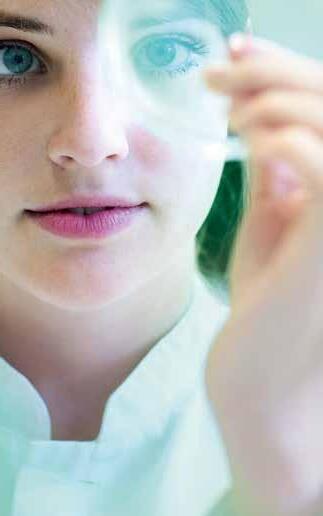
Veramaris’ partnership with Manolin uses data collected from over 232 million fish and 99 farms to reveal meaningful benefits of higher dietary EPA & DHA levels on biological performance and harvest quality. These results empowered farmers to increase their return on investment through nutritionally optimised salmon feed.
Scientific understanding of the benefits of essential fatty acids in fish nutrition is developing fast, but the implications for commercial salmon farming proved hard to define, until now. A new partnership between Veramaris and Manolin has enabled the use of big data in commercial aquaculture conditions for the first time, with the aim of gaining insights into Omega-3 (EPA & DHA) levels in commercial aquafeed and the effects upon fish performance, quality, health and welfare.
Earlier this year, Veramaris recruited Manolin’s experts to conduct research and analyse anonymously provided feed and farm data. Through its innovative ‘Harpoon’ aquaculture research data intelligence platform, Manolin conducted a focused study analysing data from most Norwegian production zones to provide insights into the impact of dietary EPA & DHA levels on farmed salmon performance.
“Our platform has collected data from more than 900 generations of farm salmon, producing insights for the aquaculture industry and demonstrating the immense potential of leveraging data intelligence in aquaculture research. In addition, our anonymous and unbiased data is well-placed for industry collaborations such as this one with Veramaris,” said Tony Chen, CEO of Manolin.
Veramaris has been assisting farmers to make the most of its new algal oil Omega-3 product by resetting omega nutrition specifications in feed to improve farm productivity. “We started by studying performance in research conditions before progressing to individual commercial farm sites, but the study allows us to go so much deeper than this,” said Ian Carr, Senior Director for Global Business Development at Veramaris.
The implications of the study are far-reaching and showcase the potential of analysing data in commercial settings to gain insights into fish performance. The results reveal that above average EPA & DHA levels in salmon feed led to significant improvements in metrics including harvest quality – with an average of 76 percent more superior harvests recorded – as well as higher feed performance, ultimately benefiting farm profitability.
The project has provided a proof of concept based on big data to unlock the full potential of Veramaris’ Optimum Omega Nutrition (OON) approach. “The results, which used data from some 232 million fish, have deepened our understanding of the impact of EPA & DHA levels on the performance of farmed salmon,” said Yann Le Gal, Global Business Development Manager at Veramaris.
Veramaris’ OON guidelines, used in conjunction with natural marine algal oil, can effectively support fish farmers to ensure animal welfare and performance are maximised, without creating additional strain on our oceans.
Today, Veramaris and Manolin will showcase early results from the project in respective presentations at the AquaNor conference in Trondheim, Norway.
Phileo’s probiotics and active yeast fractions are designed for hatcheries and growing farms to support health, feed efficiency and growth performance . Our sustainable solutions bring innovative responses to fishmeal reduction stakes and environmental challenges. Act with nature for animal care.
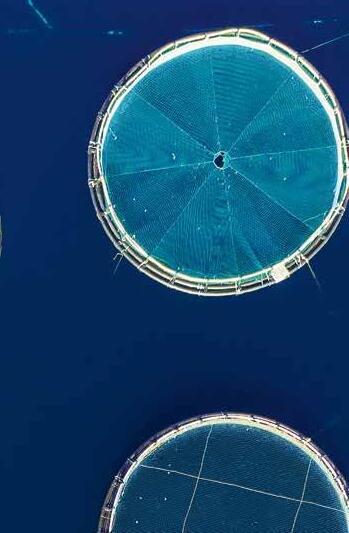
Join the fish revolution Visit our new website www.phileo-lesaffre.com International Aquafeed - September 2023 | 9 News




Your industry training platform The Online Milling School provides a comprehensive 12-week remote learning experience covering all aspects of feed milling, from raw material handling through to final packaging and dispatch. www.onlinemillingschool.com FISH FARMING TECHNOLOGY Live session: October 5, 2023 São Paulo Brazil
China halts aquaculture imports from Japan
The 9.0 magnitude Tōhoku earthquake in 2011 and the ensuing tsunami caused a disaster at the Fukushima I Nuclear Power Plant. The earthquake off the coast of Japan’s Honshu Island triggered a largescale tsunami. This natural disaster led to the shutdown of three reactors at the nuclear power plant. The damage caused by the tsunami and the subsequent nuclear leak caused a major environmental crisis in the region. Japanese authorities and the international community have long been studying the environmental and human health impacts of the incident.
Japanese Prime Minister Fumiyo Kishida announced after a cabinet meeting on August 22 that radioactive waste water from Fukushima would be discharged into the ocean on August 24. This step raised concerns about the expansion of radioactive contamination in the region and the safety of seafood. China has taken a tough step against the plans to discharge radioactive wastewater from Japan’s Fukushima region into the ocean.
China issued an official statement saying it was taking action to protect food safety and consumer health. Under the ‘Food Safety Law of the People’s Republic of China’ and related regulations, it was announced that measures will be taken to prevent the risk of radioactive contamination from Japan’s Fukushima on food safety and to protect the health of Chinese consumers.
It was stated that the General Administration of Customs of China has completely suspended the import of aquatic products originating from Japan as of August 24, 2023. This step was evaluated as a reflection of the importance China attaches to food safety and health standards. The Chinese government stated that this measure is in line with international trade rules under the World Trade Organization agreement on the application of sanitary and phytosanitary measures.
The nuclear contamination problem in Japan’s Fukushima region continues to cause international concern. The incident has brought to the fore the impact of radioactive wastewater on the environment and food supplies and has sparked a widespread debate on how countries should approach such issues.

THE REVOLUTION IN PELLETING TECHNOLOGY

Progress MonoRoll HE 10-15% higher throughput Optimum pellet quality Guaranteed 20% energy savings Please contact us for the possibilities within your company info@ptn.nl - www.ptn.nl Scan de QR-Code for more information International Aquafeed - September 2023 | 11 News
New USA bill promotes equality between aquaculture and agriculture

Congressman Frank Pallone Jr announced the introduction of a bipartisan bill today to support aquaculture and seafood industries. The supporting Equity for Aquaculture and Seafood (SEAS) Act reforms federal agricultural policy to ensure these industries receive equal treatment within the United States Department of Agriculture (USDA). The bill requires the USDA Secretary to give the same consideration to aquaculture producers as animal agriculture producers to ensure adequate and fair funding levels are made available to aquaculture producers through grants under USDA programs. Representatives Kat Cammack, Suzanne Bonamici, and Lisa Blunt Rochester are original cosponsors of the bill.
Aquaculture is the production of fish and shellfish in controlled environments and is becoming an increasingly important method of food production as climate change alters the productivity of farming on land. USDA recommends that adults eat at least eight ounces of seafood per week as part of a healthy diet. Despite this recommendation, it awards a disproportionate percentage of program funding to animal agriculture and land-based producers, leaving coastal communities and aquaculture producers without equal access to federal funding. As a result, American investment in aquaculture has failed to keep pace with the rest of the world. According to the National Oceanic and Atmospheric Administration (NOAA), the United States imports 70 to 85 percent of its seafood. It is estimated that more than half of this imported seafood is a product of foreign aquaculture.
“Investing in aquaculture will help ensure all Americans have access to safe and affordable seafood nationwide. When we increase the consumption of American seafood, we can alleviate food insecurity, create new economic
opportunities, and reduce our food system’s impact on the environment,” Pallone said. “ The SEAS Act will help us meet the growing demand for American seafood and provides critical Congressional support for USDA’s aquaculture programs. My bill makes critical investment in our aquaculture and seafood industries now, so that our food system is resilient in the future.”
President of the Baymen’s Protective Association, Keith Craffey said: “The SEAS Act is an important first step to ensure seafood and aquaculture are treated fairly at the Department of Agriculture. We are grateful for Congressman Pallone’s leadership and his ongoing support of New Jersey’s seafood industry. His bill will help USDA meet the growing demand for seafood and help us continue to provide affordable local seafood to people throughout the state.
“Agriculture in the US is an expanding industry that faces growing pains and the challenges of rapidly changing environment, especially with respect to climate change.
Congressman Pallone’s leadership on this bill will provide additional resources for this industry to thrive, and to support the innovation necessary to add key stressors such as disease, increasing water temperature, changes in salinity and range shifts in habitat,” said Mike De Luca, Director of the New Jersey Aquaculture Innovation Center.
Matt Gregg, President of the New Jersey Aquaculture Association said: “We have to work harder to shrink our seafood deficit and bolster our nation’s own production capabilities. The SEAS Act prioritises aquaculture and lays out a framework for its future. We are eager to work with Congressman Pallone to strengthen the domestic production of shellfish,”.
New Jersey is home to a vibrant seafood and aquaculture industry, which collectively contributes more than US$3 billion annually to the state’s economy and accounts for more than 53,000 jobs in the state. New Jersey’s seafood industry has consistently been a nationwide leader in the production of clams, oysters, scallops, and other seafood products.
Innovasea adds Atlantic salmon algorithm to real-time biomass solution
Innovasea, a global leader in technologically advanced aquatic solutions for aquaculture and fish tracking, announced today that its AIdriven biomass estimation solution, BiomassPro, is now available for use with Atlantic salmon.
Recent field trials in British Columbia, Canada, have shown the solutions algorithm for Atlantic salmon highly effective at estimating the size and weight of that species in real time.
“The technology behind BiomassPro continues to perform well in the field, which is really exciting,” said Rafael Cordero, vice president of engineering at Innovasea. “Customers have been asking for some time when it would be available for Atlantic salmon, but we wanted to take time to fine tune the algorithm and ensure we were bringing a quality product to the marketplace.”
BiomassPro is an AI-powered solution that estimates the size and weight of fish stocks in real time to help farms optimise production and reduce feeding costs. It also provides accurate growth projections to improve resource planning and sales forecasting and ultimately boost revenues.
BiomassPro is currently in use at farms in Canada, Chile, New Zealand, the United States, Mexico, Central America and the Mediterranean region. It is available for six species: Atlantic salmon, cobia, king salmon, red snapper, totoaba and yellowtail.
12 | September 2023 - International Aquafeed News

IVS Liquid Dosing Doornhoek 3810 5465 TB Veghel Nederland T +31(0)413 29 19 76 info@ivs.nl www.ivsdosingtechnology.com We are IVS... leading in liquid dosing • Compact systems • For all liquid and soluble applications • High end products • State of the art technology • Standard and customer made solutions Sold, delivered and installed in more than 40 countries worldwide. Scan this QR-code Learn more! WWW.ALLER-AQUA.COM TM SUPPORT Prevention before Treatment LET’S GROW TOGETHER Aller Aqua’s functional fish feed SUPPORT D improves skin health by supporting mucus layers, resulting in: Lower prevalence of winter sores and jaw infection Reduced mortality Increased welfare of fish The new formula for salmon farming International Aquafeed - September 2023 | 13 News
Brett Glencross
Sustainability or just transferring risk elsewhere?

Recent approvals by Norway’s Food Safety Authority to allow genetically modified rapeseed oils to be used in salmon feeds in that country are arguably a stepchange in the development of GM feed ingredients for aquaculture. However, coinciding with that has been the publication of a sobering paper by the organisations behind the development of that technology, who pointed out that this had been a twenty-year journey. So, it has been far from a quick fix and demonstrates how much foresight and commitment are needed for some of these big issue projects. Interestingly, the feed sector was quickly to follow with the comment that they would only consider using the GM oils subject to retail and consumer acceptance, something that to date has still to materialise with any GM feed ingredients in the European aquaculture market. And this is set against a backdrop where new sources of EPA+DHA have never been in higher demand.
However, even before the recent price spike in fish oils, another line being touted about the GM oils was their claims to sustainability superiority over fish oils. However, on closer inspection this argument doesn’t appear to carry much weight either once a proper lifecycle assessment analysis is done. Especially when we consider


the current sustainability evidence of small pelagic fisheries, which actually shows that they are among the most sustainable and well managed of all global fisheries. Or when we consider that most of the world’s fish oil production actually comes from by-products from aquaculture or fish caught for human consumption. Indeed, the evidence base for sustainability superiority of any terrestrial agriculture product is somewhat questionable on several grounds. In terms of the carbon-footprint story, a quick review of the Global Feed and LCA Institute (GFLI v2.0) database (using economic allocation as per PEFCR-Feed guidelines) we can note that the global warming potential (a.k.a. carbon footprint) value for the British sourced (GB) EF3.1 fish oil value comes to 712 kg CO2-equivalent per tonne, against the corresponding GB EF3.1 crude rapeseed oil of 1808 kg CO2-equivalent per tonne. And that is on an equal tonnage of oil basis. We still need to factor into that the equation that we need three times the amount of the GM rapeseed oil to get the same amount of EPA+DHA. So, arguably the equivalent market supply of EPA+DHA by the GM rapeseed oil is 4068 kg CO2-equivalent per tonne. When we consider the sustainability in this way, whatever way you look at it the numbers they certainly don’t appear to equal any sustainability argument for a GM oil over fish oils on the carbon footprint front. But then, maybe that is the real issue. All this is not really about sustainability. But rather just reducing or transferring that risk somewhere else.
The Aquafeed Journal
Aquafeed Journal is a new online publication by Perendale Publishers Ltd, United Kingdom, with a distinguished track record of technical and trade magazines in the agricultural and aquaculture sectors. This new peer-reviewed scientific journal will serve academia and the commercial aquaculture industry with high-quality papers relating to aquafeed science and technology for different species of farmed fish and crustaceans. It is envisaged to address fundamental nutritional requirements for effective and optimal production and applications to advanced feed formulations. This will include essential amino acids, proteins and energy sources as well as key vitamins and minerals pertaining to fish and shrimp growth, feed efficiency and health. A major area will be studies that focus on feed ingredient assessment and in particular those that are sustainable alternatives to marine derived materials like fishmeal and fish oil. Therefore investigations directed towards plant and next generation proteins like insect meal, algae and microbial sources would be desirable areas. Novel oils and lipids that provide essential fatty acids would be of considerable importance. Studies on functional ingredients affecting the health and immune function of fish and shrimp are very topical and of much interest to the commercial aquafeed sector. We would welcome papers researching the role of prebiotics, probiotics and phytobiotics on gut health, mucosal immunity and their interaction and modulation of the intestinal microbiota. Please do not hesitate to contact us with your queries at journal@perendale.co.uk.
14 | September 2023 - International Aquafeed News
shrimp
appoints Hawkins as exclusive distributor for trū chitosa
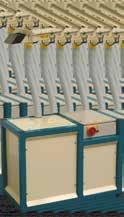
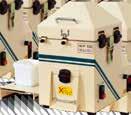


The trū Shrimp Companies Inc announced today that trū Shrimp has appointed Hawkins Inc as the exclusive distributor of its trū Chitosan products into the United States’ pharmaceutical and medical device industries.

trū Chitosan is derived from the exoskeletons of trū Shrimp’s production of consumer shrimp. Chitosan is a molecule refined from the shell of shrimp and is used for numerous pharmaceutical and medical applications. trū Shrimp is the only United States producer of chitosan that meets the strict medical specifications of the United States Pharmacopoeia – National Formulary (USP-NF) monograph.
“From our first introduction, we were impressed by the quality standards set by trū Chitosan,” said Chris Meyer, Sales Manager of Hawkins Pharmaceutical. “its trū Chitosan products meet the quality and regulatory standards our customer base demands.”
“From the inception of trū Shrimp, we have pursued the production of chitosan from the shells and peels of our shrimp,” stated Michael Ziebell, President and Chief Executive Officer of trū Shrimp. “trū Chitosan is the result of the vision and work of our team and partners. We are honoured to have a company with the certifications and reputation of Hawkins representing trū Chitosan to the medical industry.”
The shrimp are grown indoors under controlled conditions free of pollution, disease, preserving chemicals and antibiotics. Those same conditions ensure the quality and consistency of the shell tissue raw material for the chitosan. These processes create an unprecedented chain of custody from genetics to finished chitosan which offers a precise and industry-unique Certificate of Origin critical to medical applications. “Our pursuit of the world’s finest chitosan starts with the world’s finest shrimp,” added Ziebell.
“We are excited to be able to provide trū Chitosan products to our customer base,” continued Meyer. “Chitosan is a heavily researched biomaterial by the medical industry. Chitosan is a versatile molecule with multiple uses including topical and internal medicine as well as medical device applications.”
FISH FARMING TECHNOLOGY Claim a 12 month digital subscription FREE of charge. Simply visit: www.aquafeed.co.uk/subscription and set up an account using promo code: HNY23
The trū
companies
Made in Britain, Trusted Worldwide. We are
can help you improve your pellet durability testing... Holmen NHP200 Series 2 Laboratory based, automatic pellet tester. Holmen NHP300 Inline, process based system. OLM N H ® Holmen NHP100 Portable, manual pellet tester.
We
Bringing nature to shrimp feeds
by Amine Chaabane, Technical & Product manager, Phodé, France
hrimp farming has become a ubiquitous industry in the globe today, with different production systems and environments around the world, but yet with similar issues. Most of shrimp’s notorious diseases as AHPND (Acute Hepatopancreatic Necrosis Disease), WSSV (White Spot Syndrome Virus) or EHP (Enterocytozoon hepatopenaei), all originally native to distinct regions in South-East Asia, are now present in several shrimp-farming countries up to South America.
Diseases have proven to be the biggest threat to aquaculture and especially shrimp aquaculture, as the latter do not possess adaptative immunity and thus are not suitable for vaccination strategies at the moment. Prevention and mitigation strategies have been developed, involving:
Environment control: one of the first steps to prevent intrusion of pathogens in ponds, although depending on farming system –semi-extensive earthen shrimp ponds are not very suitable - and limited, as pathogen are naturally present and ubiquitous in the water

• Antibiotics: known for their efficacy but not preferred because of antimicrobial resistance
• Genetics: pathogen-resisting genetic lines have been developed in the past years, but at the cost of slower growth compared to other lines
• Probiotics: they have become a full part of farm management as environmental conditioners as well as gut and digestive supporters
From the different strategies mentioned above, several of them involve aquafeeds, as the key vessel for active molecules
to reach their target, usually gut and hepatopancreas of shrimp. The evolution of the industry led to a significant diversification of specialty feeds where health feeds play an important role in prevention and cure of diseases. But feeds can also be involved in disease causes by not doing their job; an uneaten feed is a perfect source of organic matter for microorganism development, and an important risk especially at high-density farms.
Health solutions need to commit for sustainability
If microorganisms-derived products as yeasts and bacterial probiotics have proven their efficiency and are now used in most of farms and feed mill in the worlds, the need for solutions stimulating natural defenses are still present, especially regarding the diversity of the type of pathogens mentioned above (bacteria, virus, microsporidian parasites).

S
How can plant extracts contribute to disease management
Figure 1: Survival rate after AHPND challenge
16 | September 2023 - International Aquafeed
Among potential solutions, plant extracts have been demonstrating their efficacy on livestock and human health for many years. Known for their antibacterial and antiparasitic activity, as naturally produced metabolites are part of plant defense system against parasites and predators, plant extracts also include some of the most potent antioxidant molecules, and their capacity to stimulate immunity cannot be doubted today.
Apart from their efficiency, plant extracts are also a promising solution as they are sustainable in their natural origin, safe for use at recommended dosages, and can come in several forms.
Phodé Laboratories, experts in functional olfaction and plant extracts; have studied shrimp diseases and its response to design Olpheel Protect, a feed additive composed of synergic blend of plant extracts, to limit the impact of pathogens in shrimp ponds and support shrimp natural defenses.
Effect on disease prevention

To evaluate the effect of Olpheel Protect on disease prevention, an AHPND challenge trial was carried in Vietnam. AHPND is one of the oldest and most common disease in shrimp ponds and can be quickly identified by visual observation of shrimp. For the experiment, specific pathogen free (SPF) whiteleg shrimp (Litopenaeus vannamei), with an average body weight of 1.41 g were tested. An experimental feed was produced with four different treatments tested:
• Negative control: uninfected shrimp fed with control feed
• Positive control: infected shrimp fed with control feed
• Treatment 1: infected shrimp fed with an Olpheel Protect supplemented feed at 1 g/kg of feed
• Treatment 2: infected shrimp fed with an Olpheel Protect supplemented feed at 2 g/kg of feed
After 14 days of acclimatation, shrimp were infected with Vibrio parahaemolyticus, at an infection dosage previously established through a separate calibration test.
Survival rate and immune system enhancement were evaluated at three sampling times: 24 hour pre-challenge, 72 hour postchallenge, and ten days post-challenge.

Scan the QR-Code to find your die! WWW.PCE.EU ARE YOU IN SEARCH OF HIGH-QUALITY RING DIES THAT PERFECTLY FITS ALL BRANDS OF PELLET PRESSES? International Aquafeed - September 2023 | 17
Figure 2: Phenoloxidase activity at 3 sampling time points. Different superscripts show significant difference (p<0.05) among the groups (lowercase) and between three sampling time points in each group (uppercase)
Barramundi Navigating Climate Challenges with Adaptability Resilience
by Jyothsna Nelloolichalil, International Aquafeed, UK
In a world increasingly impacted by climate change, finding resilient species that can adapt and thrive in changing environmental conditions is of paramount importance. One such remarkable example is the barramundi (Lates calcarifer), a versatile and climate-resilient fish that has captured the attention of researchers and aquaculture enthusiasts alike. With its unique physiological attributes, adaptive behavior, and economic significance, the barramundi stands out as a model for understanding climate resilience in aquatic organisms.
Physiological Adaptations
The barramundi's remarkable ability to thrive in varying conditions is attributed to its suite of physiological adaptations. Its wide tolerance for temperature ranges, salinity levels, and water qualities make it an ideal candidate for aquaculture and habitat restoration efforts. Research by Chapman et al. (2015) suggests that barramundi possess the ability to regulate their metabolism and growth rates in response to changing temperatures, enabling them to maintain optimal performance even in fluctuating environments.
Furthermore, the fish's unique respiratory system allows it to survive in waters with low oxygen levels. Barramundi possess both gills and a modified air-breathing organ called the labyrinth organ, enabling them to extract oxygen from air when water conditions are suboptimal. This adaptation has been extensively studied by Ip et al. (2016), shedding light on the fish's ability to survive in habitats prone to hypoxia.

Behavioral Flexibility
Barramundi's behavioural flexibility plays a crucial role in its climate resilience. These fish are known for their migratory behaviour, which allows them to locate more suitable environments as conditions change. Research conducted by Halliday et al. (2020) highlights the barramundi's capacity to navigate and adapt to varying salinity levels by moving between freshwater and estuarine habitats. This behaviour not only aids in their survival but also contributes to maintaining genetic diversity within populations.
Furthermore, barramundi exhibit plasticity in their feeding habits. Studies by Feidantsis et al. (2018) indicate that these fish can adjust their diets based on the availability of prey species, contributing to their ability to withstand shifts in the food web
DRAFT 18 | September 2023 - International Aquafeed
Life, made easier. jefo.com Jefo PEAK Program Production & Performance Improves Feed Conversion Increases Digestibility
Environmental Sustainability Increase you profit in aquaculture with our Jefo Protease. DRAFT
Improves
Hatcheries

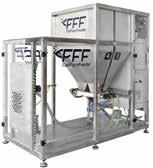

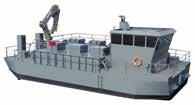









Pellet 50-800 µ
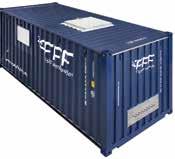

Ø Pipe 20 mm
Pre-grow
Pellet 1-4 mm
Ø Pipe 25-40 mm

Pellet 4-20 mm Ø Pipe 50-90 mm

LAND • SEA • RAS Aquaculture
Feeding Systems
Live feed
Ongrowing
L A N D B A S E D L A N D B A S E D L A N D B A S E D S E A B A S E D Dry feed The only manufacturer worldwide that covers all feeding stages of fin fish and shrimp, for land or sea based systems Aquaculture Europe 2023 - Booths 16-17 18 - 21 Sept 2023 • Vienna (AUSTRIA)
caused by changing environmental conditions.
Reproductive Resilience
The reproductive strategy of barramundi also contributes to their climate resilience. Unlike species with fixed reproductive patterns, barramundi exhibit flexibility in their breeding behaviour. Research by Loughnan et al. (2019) demonstrates that these fish can adjust their spawning times in response to variations in temperature and food availability. This adaptability ensures that barramundi populations continue to reproduce successfully, even in the face of changing climate patterns that affect traditional breeding seasons.
Economic and Ecological Significance
The climate resilience of barramundi extends beyond ecological considerations. The fish has garnered attention from the aquaculture industry due to its rapid growth rates and versatility in various farming systems. Barramundi farming is practiced in diverse environments, ranging from freshwater ponds to brackishwater enclosures, providing a buffer against the uncertainties of climate change impacts on aquaculture (Holmes et al., 2018). The economic significance of barramundi farming is underscored
by its high market demand, making it an attractive option for sustainable food production and rural livelihoods. Moreover, barramundi's resilience contributes to ecosystem stability. As both predator and prey, they play a crucial role in maintaining balanced aquatic food webs. Research by St John et al. (2017) emphasizes the importance of barramundi in controlling populations of smaller fish species, preventing potential ecological imbalances caused by climate-induced shifts in species composition.

In an era marked by climate uncertainty, the barramundi stands as a shining example of a climate-resilient fish species. Its physiological adaptations, behavioural flexibility, and reproductive resilience collectively contribute to its ability to thrive in ever-changing environments. The economic and ecological significance of barramundi further underscore its importance in both aquaculture and ecosystem management. By studying the mechanisms that make barramundi resilient, researchers can gain valuable insights into enhancing the climate resilience of other species and ensuring the sustainability of our aquatic ecosystems.
References are available upon request
Master in Sustainable Aquaculture

International Aquafeed - September 2023 | 21
Innovative use in phytogenics:

From single molecules to synergistic formulas for aquaculture
by Fabrizio Caruso,
The world of additives in aquafeed is consistently growing with new proposals and molecules promising beneficial effect in fish and shrimp aquaculture. After 2006, when antibiotics used in feeds as growth promoter were banned by the European Union, a hole in the market was created and many new possibilities opened and novel research paths to improve or establish aquaculture production were started.
It was clear from the beginning that once established the ideal farming systems and conditions for each species, the only way to keep up with aquaculture’s potential was the use of the best supplementation possible to gain an edge against the competitors and the environment and its rapid changing conditions. In order to reach the biological potential for aquatic species, molecules were tested alongside new ingredients and a wide variety of solutions were created. So far probiotics, prebiotics, organic acids, feed enzymes and phytogenic molecules are some of the most popular options for the aquaculture sector for their effects in aquafeeds.
Phytogenic is a word that derives from the ancient greek φυτόν (phutón, “plant”) and -γενής (genḗs, “offspring; kind”) and indicates a very large group of molecules of plant origin. Unlike other compounds, these molecules are considered generally safe and free from residues, therefore suitable to be easily incorporated into the aquafeeds without harming the health concerns of public at large.
These molecules attracted in the years a huge amount of interest from the industry and the research alike as they were used for centuries in the history of medical and alternative practices. Their use includes a variety of beneficial effect with generally no risks, especially regarding safety and wellness of both animals and humans.
Many phytogenic molecules are therefore included in the so called zootechnical additives, which are defined as set of molecules used as a mean to improve performances by supporting the efficient use of feed resources or the general health of the fish and shrimps. This group includes all those molecules targeting specific physiological function, enhancing the beneficial biological processes or limiting the damaging interactions. Some of the effects on the physiology of aquatic animals of their inclusion in aquafeeds are:
1. Disease prevention and control: One of the key advantages of phytogenics in aquaculture feeds is their antimicrobial properties. Several studies have demonstrated the ability of phytogenics to inhibit the growth of pathogenic bacteria, fungi, and parasites, thus reducing the incidence of diseases in farmed fish. Phytogenics can act as natural alternatives to antibiotics, helping to mitigate the development of antibiotic resistance and the concerns of the consumers on their use
2. Improved feed efficiency: Phytogenics can enhance feed efficiency in aquaculture by improving nutrient digestibility and absorption. Certain phytogenics possess digestive stimulant properties, promoting the secretion of digestive enzymes and increasing nutrient utilisation. This leads to better feed conversion ratios and reduced feed wastage, resulting in economic benefits for farmers.
3. Enhanced Growth Performance: The use of phytogenics in aquaculture feeds has shown potential for improving fish growth rates. Some phytogenics possess growth-promoting properties by stimulating appetite, enhancing nutrient uptake, and optimising metabolic processes. These molecules can positively influence growth parameters such as weight gain, feed conversion ratio, and specific growth rate.
4. Stress Reduction: Aquaculture practices often subject fish to stressful conditions, leading to compromised immune function and increased susceptibility to diseases. Phytogenics
Aquaculture specialist, Vetagro Spa, Italy
22 | September 2023 - International Aquafeed
have shown promising results in mitigating stress in fish by modulating stress-related hormones and reducing oxidative stress. This can enhance overall fish health and wellbeing.
5. Environmental Sustainability: The environmental impact of aquaculture is a significant concern for the public at large and phytogenics offer a sustainable new approach by reducing the use of synthetic chemicals and antibiotics in aquaculture systems. By providing natural alternatives for disease control and growth promotion, phytogenics contribute to more environmentally friendly aquaculture practices while contrasting antibiotic resistance, as their persistence in the environment is low compared to synthetic competitors.
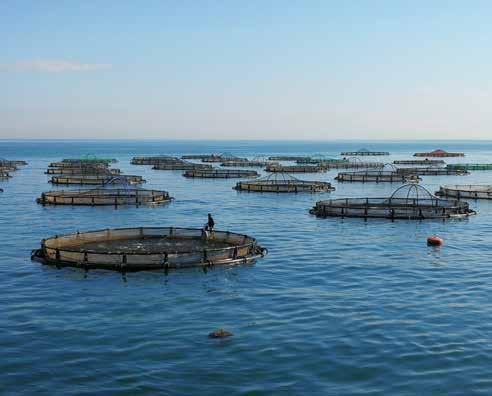
Innovating the botanicals paradigm

As a result, the industry and academia have paid significant attention to phytogenic feed additives looking for the best option to boost immunity and improve stress and disease resistance in farmed animals while being ecologically respectful and economically effective.
This starting point was rapidly saturated with options providing additives based on a singular effective component. In the recent years however a new holistic strategy exploiting the synergies among two or more botanicals and organic acids was explored,
Wenger.com
Make Higher Quality Feed More E ciently
Precise control of product density for floating and sinking options
Ingredient flexibility for all aquatic species
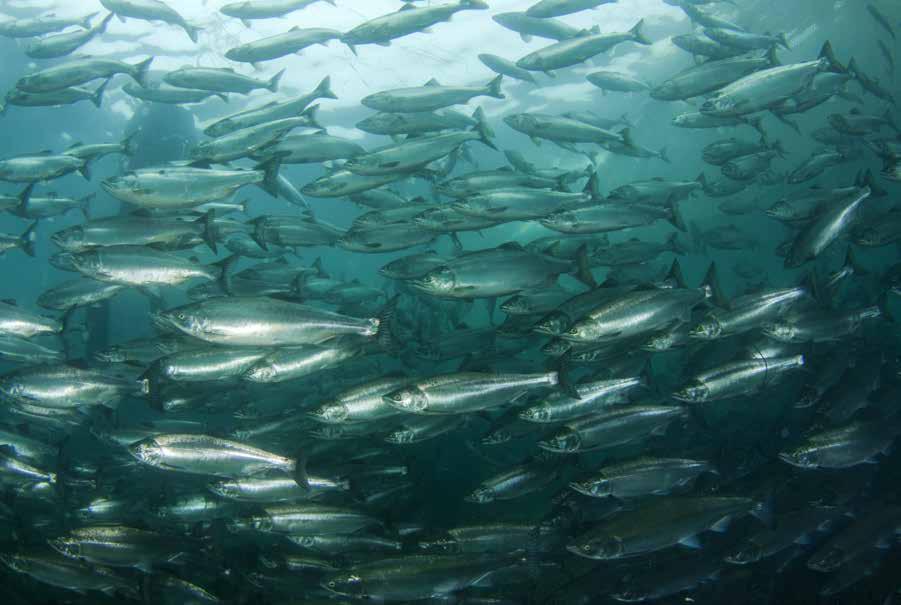
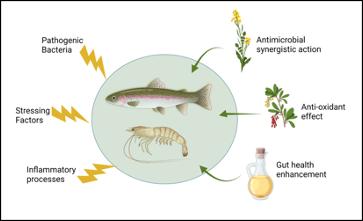
High-capacity systems reduce operating costs
Legendary Wenger quality, throughput, and flexibility
Wenger extrusion systems are ideal for salmon, shrimp, and RAS feeds
International Aquafeed - September 2023 | 23
Protect your profits
Mitigate risk through mycotoxin deactivation






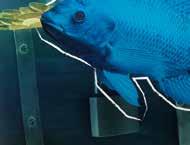

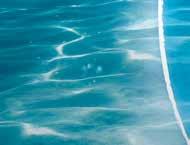
















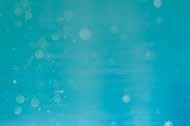



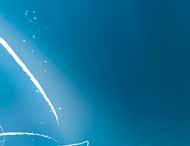
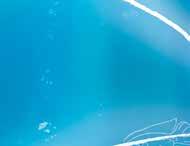
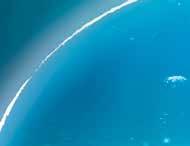

In addition to rising feed costs, mycotoxins further impact profitability by impairing growth performance and health status. The risk is never zero. Mycotoxin risk management is the insurance policy to secure feed quality and safety, whilst optimizing productivity. Increased productivity
Reduced risk
If not us, who? If not now, when? WE MAKE IT POSSIBLE






and
efficiency Sustainable production
us on:
Follow
www.dsm.com/anh
on which we build our studies at Vetagro.


After many years there has been a shift in the usage of this compounds when the synergistic action of botanicals was discovered. One example is the thymol based formula based on organic acids and botanicals studied by Toschi et al. (2020) and Rossi et al. (2021). In the studies, the compounds are proven to act together to provide three specific actions for animal health:

Antimicrobial action: through the combined action of the compounds in which both pathogen’s membrane and internal physiological function are targeted at the same time, we see how efficiently botanicals increase permeability of the pathogen’s outer layer while the secondary compounds penetrate the bacteria inhibiting growth from the inside by shifting internal pH. This synergistic mode of action is defined as 'anion model' and results confirmed the combination of the botanicals is highly more effective in inhibiting Vibrios than the single components alone. The formula was patented for the innovation brought in the market especially against the obiquitary opportunistic pathogens often associated with infections in aquaculture productions.
Gut anti-inflammatory modulation: as stated before botanicals can exert different action on the host cells and, while inhibiting the pathogen: the botanicals of the formula were tested evaluating the expression of the genes modulating the inflammatory responses in animals using gene-expressing technology. Results in this study reported a significant amelioration in preventing inflammatory damages compared to control values.
Gut integrity enhancement: the importance of the barrier created by the intestinal mucosa and the integrity of the cells is of the outmost importance in aquaculture. This barrier not only prevents the entrance of pathogens in the system but is directly correlated to a correct conformation of the gastrointestinal tract and its nutrient absorption function. This is why botanicals were also tested on single layers of cells mimicking the digestive system to evaluate the direct effect on the intestinal mucosa. To do so a great deal of test regarding the electrical resistance (TEER) created by the cellular layer was carried out evaluating the same resistance that keeps pathogens and parasites out of the system, including the proteins keeping the layer together (tight junctions). The results of these tests were published in 2020 and recorded an enhancement on all these parameters, validating the expectations of this set of molecules.
Confident on the effects of this formula, it was then patented

under the name of Aviplus®Aqua and tested on the main farmed aquaculture species ranging from crustaceans to bony fish and, although the mode of actions for several of the positive enhancements brought upon the animal physiology are still under study, their inclusion in aquafeed have resulted in antimicrobial and growth-promoting functions while showing the enhancement of both humoral immune response and anti-inflammatory processes.

These functional properties make the formula attractive for the industry and innovatory dietary treatments for fish and shrimps beyond the singular positive effects of the components.


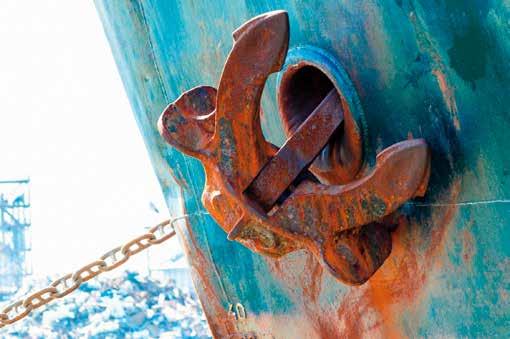
Conclusions
Botanicals are widely used as feed additives to increase the growth performance of healthy fish and shrimps or to help manage stressful situations with promising results. This large group of feed additives includes a vast variety of molecules, largely differing in terms of structural and functional properties, so that a unique and general mode of action is unlikely to exist. We have been studying their effect on fish and shrimp feed to overcome the many challenges and threats to the aquaculture sector. The summary presented in the previous paragraphs, presenting both in vitro and in vivo experiences, is just a glimpse of beneficial effect of the botanicals gathered in the Aviplus®Aqua formula according to our internal and independent studies alike. Research on those molecules is therefore not finished yet but the commercial formula was proven to be a promising solution to enhance the health status of aquatic animals and directly secure the investments of the farmers in these challenging times for aquaculture beyond the positive enhancements brought by the single components.
Development,
and anti-fouling solutions Use of nanomaterial technology to produce green coating alternatives Improve the understanding of biofouling and protection of niche areas in maritime industries This project has received funding from Research Council of Norway, The Malta Council for Science and Technology, and The Federal Ministry for Economic Affairs and Climate Action Germany (BMWK) via the MarTERA – ERA NET co-fund scheme (under grant agreement No 728053-MarTERA) of H2020 of the European Commission.
PRONICARE MarTERA ERA-NET COFUND Project
formulation, and testing of new environmentally friendly anti-corrosion
International Aquafeed - September 2023 | 25
Transnational cooperation for Protecting Niche areas from marine corrosion and bio-fouling by green coatings and new test technologies
Aquaculture must sustainably expand to feed generations
by Matts Johansen, CEO, Aker BioMarine, Norway
It is no secret that terrestrial agriculture, which includes the practice of raising the cattle to produce beef, faces increasing pressure due to its carbon impact. The climate-conscious consensus is that we, as global consumers, must reduce our meat intake. We need to make better and planet-friendlier choices instead.
I don’t believe that my grandchildren will be eating the amount of beef that is consumed today. It simply won’t be sustainable. It’ll be considered less acceptable. And perhaps it won’t even be available in the quantities required to feed the number of people who will be living on this planet at that time – expected to be somewhere in the neighbourhood of more than 10 billion!
By then, I believe that this generation will have better, more sustainable alternatives – much of which will come from the sea. And it’s in this vision of our food future, one in which the sea supplies the protein and nutrients we need to thrive, that we must look to the global aquaculture industry to lead the way.
High growth expectations for aquaculture
Today, as many as 180 billion fish are farmed globally each year – making it the world’s fastest growing food sector. Growth expectations for this industry are high given the rise in seafood demand and the decline in the amount of captured wild fish each year.

Asia accounts for most of the fish consumption in the world, which is probably why they produce most of the seafood (estimated 88 percent production share) you can buy in stores or eat in restaurants today. Asia is considered the epicentre of the aquaculture industry, home to roughly 92 percent of all fish farms (57.8% of them in China alone). While Asia dominates world aquaculture rankings, growth of the industry can be seen in both South and North America, as well as in the EU – namely the aquaculture countries of Chile, Canada, and Norway.
It's a growing industry that has the potential to feed and nourish a growing population. Global fish consumption is expected to rise 30 million tonnes by 2030, according to the Food and Agriculture Organization (FAO) of the United Nations. People need sustainable sources of protein in their diets, and food from the sea
26 | September 2023 - International Aquafeed
RESTRICT inappropriate use of antibiotics and chemicals
REDUCE losses from subclinical disease and outbreaks
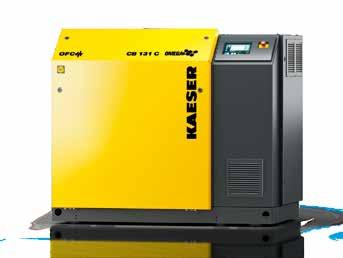
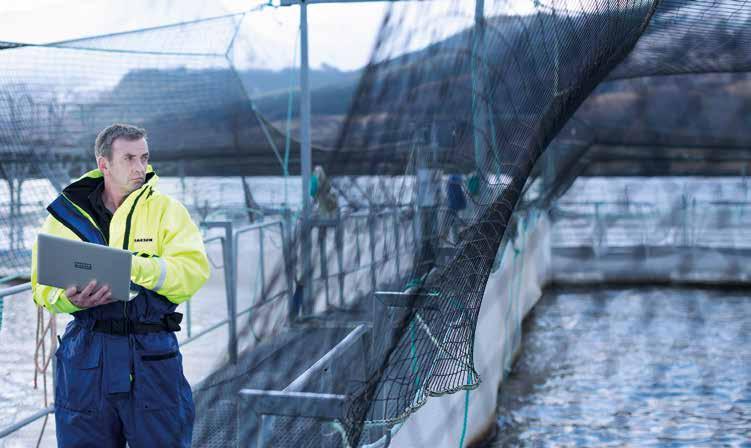
INCREASE economical and ecological sustainability
BOOST feed perfomance and farm productivity

Aquaculture with KAESER reliable as the tides www.kaeser.com/aquaculture HEALTH IS AT THE HEART OF OUR CONCERNS
BOOST YOUR BUSINESS BY OPTIMIZING YOUR HEALTH ADDITIVE STRATEGY www.adisseo.com International Aquafeed - September 2023 | 27
A COMPLETE SOLUTION BASED ON 4 PRODUCTS

is a blend of natural
products dedicated to stress management based on natural defenses stimulation and control thanks to anti-inflammatory and antioxidant effects.
2
is a blend of unique oleochemicals and active matrix selected for aquaculture application to help the reduction of parasitic challenges.
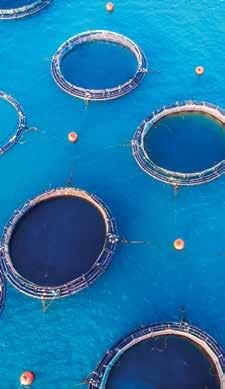

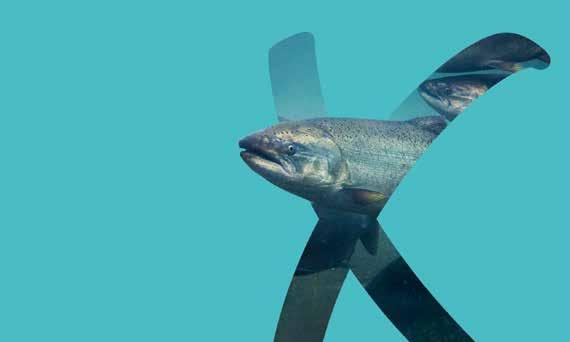
1 3 4
is a natural solution specially developped for Aqua challenges leading to better economical results thanks to a wide spectrum modes of actions essentially linked to the gut balance modulation.
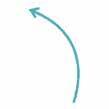

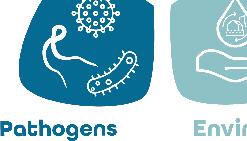

is a blend of Bacillus spp. strains dedicated to biocontrol in all aquaculture farming systems.







contact@mixscience.eu
OUR OBJECTIVE:
To support our customers to combine sustainability and economical performance
Find miXscience on © Marketing miXscienceAvril 2022
can meet that need so long as it minimises environmental impact. Aquaculture practice in recent years has succeeded in doing just that, growing steadily and sustainably as part of a more secure food future, reducing our global reliance on wild, ocean-caught food, and of course, other meat.
But it’s not quite as simple as it sounds. Sustainability in aquaculture is not without its challenges and complexities. And with rising demand, this industry will face additional pressure to produce more, and much faster. Cost pressures will naturally be a factor, and we run the risk, across the industry, that unsustainable practices will creep in as we work hard to meet the need to feed our planet.
Setting a strong precedent for sustainable aquaculture
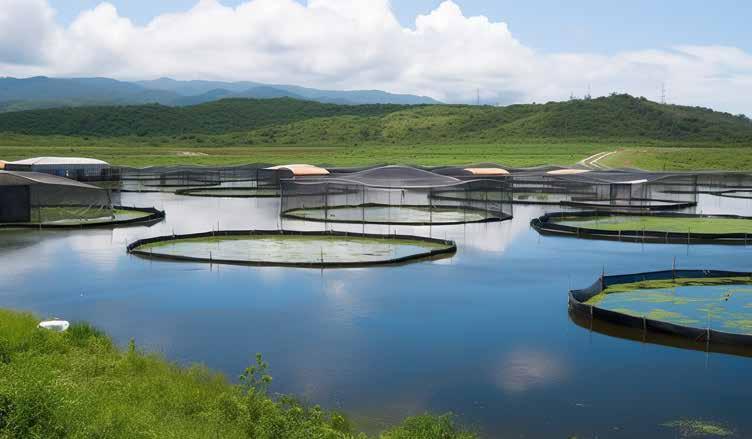
This is where the decisions made by leading aquaculture players can set a strong precedent for the rest of the world. As demand for farmed seafood grows, so too will the need for sustainable and affordable aquafeed ingredients. The choice of these raw materials directly impacts the environmental sustainability of aquaculture operations. The right ingredients can also determine how efficient that feed is, especially in terms of how it contributes to growth performance and survival rates of the fish.
Through years of scientific study, Aker BioMarine and our research partners have run trials measuring how various aquafeed ingredients impact outcomes for producers. Just like humans, fish require a balanced diet that delivers the nutrients they need to grow and develop, as well as survive under sometimes stressful conditions. The results of these trials consistently show that fish can survive and even thrive under feeding conditions that minimise or remove fishmeal as a key ingredient in the diet.
As fishmeal becomes a less viable ingredient option for farmers due to rising costs and increasing scarcity, alternative ingredients are gaining traction. The sustainability of these ingredients is key, especially when the industry’s shared ambition is to utilise a fully sustainable aquafeed. Aquafeed represents the majority of a producer’s carbon footprint, which means that not just any ingredient will do. This industry requires ingredients that have the potential to revolutionise the feed industry while also remaining climate compliant.
The world needs to know more about sustainable aquafeed raw materials
At Aker BioMarine, we are committed to uncovering sustainable feed ingredients that can help contribute to long-term food security. And we are ‘walking the talk’ as well, putting alternative ingredients to the test through a recently formed partnership with the Norwegian government and two leading aquaculture players in Norway. Together, we are working to determine which raw materials can most effectively give aquaculture the sustainable boost it needs to meet the demand in the coming decades.
As part of this collaboration, we are conducting a large-scale research trial, titled the ‘Raw Material Revolution’, a name that signifies the urgent need for more sustainable and effective ingredients. Research is an essential part of the aquafeed future, directly impacting the aquaculture producers’ ability to expand and scale at the pace required to feed future generations. I believe that the outcome of this trial, and the findings we discover, will be critical for the industry. Our future reliance on seafood as a primary source of nourishment will require fresh thinking, innovative alternatives, and a strong focus on sustainability and efficiency of the aquafeed.
Aquaculture sustainability doesn’t have to come at the cost of production outcomes

We can’t ignore the fact that our sustainable and secure food future also depends on the food our food eats. Naturally, as a krill company, we believe that sustainably sourced Antarctic krill fulfils important nutritional needs for fish, creating better results for the producers. It’s an alternative raw material that meets both the nutritional needs in the feed as well as the rising sustainability standards for the industry.
We at Aker BioMarine are passionate about constantly learning and understanding more about krill’s role in sustainable aquaculture production. Aker BioMarine’s Qrill Aqua family consists of three functional ingredients for improving the growth and health of fish, shrimp, and other species in aquaculture. We believe that this ingredient is one that people can count on, and we hope that we can work together to secure a growing supply of seafood to feed generations to come.

International Aquafeed - September 2023 | 29
UTILISING MARINE PROTECTED AREAS to support sustainable aquaculture operations

 by Prof Simon J Davies, Emeritus and Adjunct Professor School of Natural Sciences and Ryan Institute, University of Galway, Ireland
by Prof Simon J Davies, Emeritus and Adjunct Professor School of Natural Sciences and Ryan Institute, University of Galway, Ireland
As we begin to appreciate more the seas, oceans and coastal areas of our planet, attention is being increasingly focused on protecting our aquatic environment, its resources, and benefits to society in diverse ways. Governments and global institutions like the UN, EU, and US agencies such as the Bureau of Oceans and International Environmental and Scientific Affairs (OES) are becoming acutely aware of the commercial importance of Marine Protected Areas (MPAs) and their societal benefits. Recently, the Monaco Blue Initiative, under the leadership of HSH Prince Albert II of Monaco has promoted recommendations based on high-level international discussions and consultations addressing ocean protection and governance, like the Convention on Biological Diversity, within the United Nations Framework Convention on Climate Change. Dialogues on establishing marine biodiversity in areas beyond national Jurisdiction within the auspices of the International Marine Protected Areas Congress, IMPAC5 (IUCN, 2023) have been addressing key issues and topics for implementation across the globe.
30 | September 2023 - International Aquafeed
This report examines how marine parks and protected zones can be effectively utilised to promote sustainable aquaculture, taking into consideration factors such as marine stewardship, stakeholder benefits, wealth creation, and valuable job opportunities. The report also explores the alignment of this approach with the UN Sustainable Development Goal 14 (SDG14) and its mandate. Selected case studies from around the world are presented to illustrate the potential of marine parks in supporting more environmentally friendly aquaculture enterprises. Marine parks i.e., designated areas of the ocean with specific conservation objectives, have the potential to play a crucial role in supporting responsible and sustainable aquaculture practice to meet increasing global demands for seafood production.
MPAs conservation and Sustainable Aquaculture
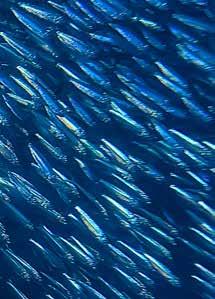



MPAs serve as a vital tool for conserving marine biodiversity, and their integration with sustainable aquaculture practices can yield multiple benefits. MPAs can provide safe spaces and havens for the cultivation of native species, reducing the risk of genetic contamination and ecosystem disruptions caused by non-native species. Intelligently designed MPAs can also enhance the resilience of aquaculture systems by providing natural buffers against pollution, disease outbreaks, and extreme weather events.
Implementing sustainable aquaculture within marine parks requires active marine stewardship and engagement with relevant stakeholders and encouraging a sense of ownership and empowerment. Marine stewardship involves collaborative management, monitoring, and enforcement mechanisms to ensure the resilience of both the ecosystem and the aquaculture practices within the park. Effective stakeholder engagement enables local communities, industry representatives, scientists, and policymakers to contribute to decision-making processes, ensuring a balance between both conservation and economic interest without conflicts.
Wealth Creation and Job Opportunities
Sustainable aquaculture within marine parks and MPAs can contribute significantly to local and regional economies by creating wealth, generating long-term employment opportunities, and supporting the local community. The development of aquaculture infrastructure, such as fish farms and hatcheries, can stimulate local economies and provide direct employment through various channels and food production, retail as well as marine engineering opportunities. Additionally, the associated industries, such as processing, distribution, and marketing, can create further employment opportunities, leading to socioeconomic growth and poverty alleviation.
SDG14 Alignment and Mandate
The United Nations' Sustainable Development Goal 14 (Life Below Water) aims to conserve and responsibly use the oceans, seas, and marine resources. Utilising marine parks and MPAs to support sustainable aquaculture aligns with this goal by promoting the careful use of marine resources, protecting biodiversity,
International Aquafeed - September 2023 | 31
and ensuring the well-being and defence of coastal communities. SDG14's mandate emphasises the need for sustainable fisheries and aquaculture practices, making the integration of aquaculture within marine parks a logical step towards achieving this global agenda. One pertinent example is the development of Integrative Multi-Trophic Aquaculture Systems or IMTA that has been long advocated by Dr Thierry Chopin of the University of New Brunswick, Saint John, Canada. Integrated multi-trophic aquaculture embraces a more cohesive production of aquaculture species reared using different trophic levels employing a circular bio-economy strategy, thus minimising energy losses and environmental degradation. Examples can involve production of fish such as salmon, seagrass and macroalgae with associated rope culture of mussels and oysters occupying specific food niches and levels of interdependence. This can prove more efficient and significantly reduce nutrient release and their environmental impact. Facilities may also be located adjacent to ocean wave hubs and wind turbines for renewable energy generation in some advanced design concepts within protected marine zones.
Conservation of marine fauna and aquaculture
Marine parks and MPAs can establish guarded areas where for example, seaweed and seagrass habitats are conserved leading to greater biodiversity. These habitats are vital for various marine species, acting as nurseries, feeding grounds, and shelter. Through zoning and regulations, marine parks can restrict activities that may harm seaweed and seagrass, such as dredging, bottom trawling, and excessive nutrient runoff. Monitoring programs within marine parks can track the health and abundance of seaweed and seagrass, allowing for adaptive
management and interventions when needed. Collaboration with scientific institutions and conservation organizations can provide expertise and guidance for the conservation and restoration of these habitats.
Marine parks can allocate specific areas for sustainable mussel and scallop farming, ensuring that these operations do not negatively impact natural habitats or other species. By promoting best management practices, marine parks and MPAs can encourage responsible aquaculture techniques that minimise environmental impacts and maintain water quality. Collaboration between marine park managers, researchers, and aquaculture operators can facilitate knowledge sharing and the development of better farming methods. Regular monitoring and assessments within the marine parks can ensure compliance with regulations and promote the long-term production for instance of mussel and scallop farming. These designated areas can also protect key habitats for lobsters and other marine fauna, such as rocky reefs, kelp forests, and mangroves, by establishing no-take zones or seasonal closures. Implementing size and catch limits within marine parks can help maintain healthy viable populations and prevent overfishing of lobsters and other valuable species. Enforcement measures, such as patrols and surveillance, are necessary to deter illegal fishing and ensure compliance with national and regional regulations. Collaboration with local fishing communities, scientists, and conservation groups can help develop superior and more efficient fishing practices and promote the conservation of marine fauna within a balanced ecosystem.
Governance and Management
Marine parks require effective governance and management to ensure their success in conserving marine resources and supporting sustainable activities: Clear and comprehensive regulations should be in place, addressing activities, fishing practices, and conservation objectives within the marine park domain. Adequate funding and resources are necessary for monitoring, enforcement, research, and community engagement initiatives. Stakeholder involvement and consultation, including local communities, fishers, scientists, and conservation organisations, can contribute to more inclusive and effective management decisions. Adaptive management approaches should be employed, using scientific data and feedback to evaluate and adjust management strategies as needed. Regular monitoring, assessment, and reporting of the marine park's ecological and socioeconomic aspects can help track progress and identify areas for improvement. Education and outreach programs can raise awareness about the importance of marine conservation and sustainable practices among park visitors, local communities, and industries promoting innovation and entrepreneurship.
Case examples of aquaculture within marine conservation areas
There are good examples of marine and ocean zones being allocated protective status for conservation and to safeguard their future. For example, In the South Pacific, we have Palau's Marine Sanctuary. In 2015, Palau established the Palau National Marine Sanctuary, which prohibits commercial fishing and focuses on sustainable aquaculture. This initiative aims to create a sustainable source of local seafood, enhance food security, and preserve marine biodiversity. Similarly, the Akaroa Marine Reserve in New Zealand allows sustainable aquaculture activities while protecting the marine environment. This model demonstrates the coexistence of aquaculture and conservation, promoting community involvement and contributing positively to the local economy.
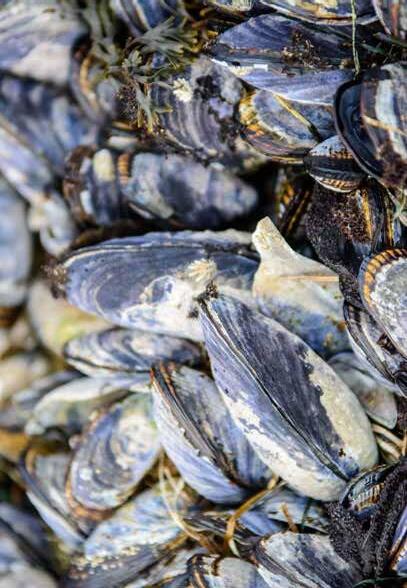
32 | September 2023 - International Aquafeed

Let’s talk possibilities » Considering your next move? We’re listening. www.ottevanger.com As industry experts, we fully understand the unique challenges you face in the aquafeed industry. That’s why we are committed to assist you throughout the entire journey, from concept to complete installation. Ready to reinvent your aquafeed operations? Skretting, Norway
Great upgrade of your feeds!
A 2020 IUCN (International Union for Conservation of Nature) case study evaluated the interface between aquaculture and marine conservation in Zanzibar. It is established that 80 percent of aquaculture activities in Zanzibar occur within the archipelago’s MPAs, also termed Marine Conservation Areas (MCAs). Positive and negative associations between the aquaculture activities, the MPAs and local communities were investigated. It highlighted a specific project towards identifying synergies between sustainable advancement of coastal communities, aquaculture, and marine and coastal conservation aims and objectives. The overall objective was directed to strengthening the sustainable development and socio-ecological resilience of coastal and island communities by providing the means to combat climate change and pollution, securing food security and socio-economic status, particularly in tropical areas (coral and mangrove ecosystems). Another dimension is to consider Marine Spatial Planning (MSP) serving to address conflicts and environmental impacts. It can promote and enhance sustainable use of marine ecosystems. Current MSP strategies have successfully provided a framework on how to achieve contained ocean areas for designated uses while mitigating costs and impacts. They offer analytical solutions in order to co-ordinate siting of multiple facilities while balancing the effects of planning on each sector in the system. In this manner they may stimulate compatible offshore aquaculture (bivalve, finfish, and kelp farming). This can complement environmental concerns (wild-
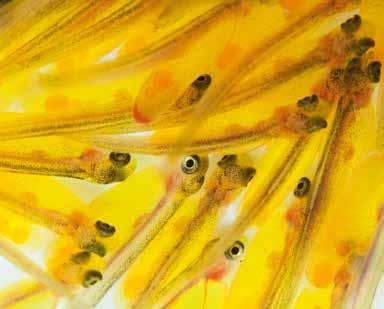
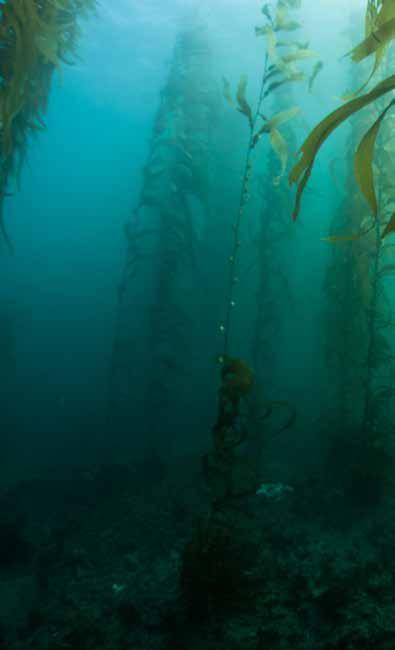
Pole Position! Leiber GmbH | Hafenstraße 24 | 49565 Bramsche Germany | info@leibergmbh.de
Leiber ® Beta-S Highly purified ß-glucans | Immunity booster | Increased resilience | Improved vaccinations Leiber ® Beta-S Plus The ß-glucan alternative | Synergistic blend of pure ß-glucans and MOS Visit our website: leibergmbh.de 070223_Leiber_Anzeige_International Aquafeed_90 mm x 270 mm + 3 mm Beschnitt.indd 1 07.02.23 11:00 34 | September 2023 - International Aquafeed
capture fisheries, benthic pollution, and disease translocation). In California, USA researchers have identified > 250,000 MSP solutions that generate significant seafood supply and billions of dollars in revenue with minimal impacts (often < 1%) on existing sectors and the environment. These academics screened model solutions to identify candidate locations for high-value, lowimpact aquaculture development.
Plymouth Sound in England was recently assigned marine park status being the UK’s first designated area and in keeping with the City of Plymouth’s recognition as the ‘Ocean City.’ It has also been granted a freeport status to promote business and tariff free trade. With its university, Plymouth Marine Laboratory, Marine Biological Association and National Marine Aquarium facilities it has enormous potential to realise conservation of seagrass beds and macroalgae as well as shellfish cultivation. For example, in the nearby county of Dorset, Offshore Shellfish Ltd. are developing the UK’s first large-scale offshore rope cultured mussel farm. Following successful pilot trials in 2014/15 the farm is currently being expanded to its full permitted area. The development will eventually be the largest of operation of its kind in European waters and will use specially designed technology to cultivate the native blue mussel, Mytilus edulis, on suspended ropes at three sites between three and six miles offshore in the fertile waters of Lyme Bay. The three sites will cover a total area of 15.4 square km and supply up to 10,000 tonnes per year once fully developed. Advantages include space and improved water quality. There is also the potential for other shellfish species &
seaweed cultivation operations. This will enable a supply for local consumption and for export into Europe. France, Belgium, Spain being major markets for the highly lucrative fresh mussels.











By adopting marine stewardship principles, engaging stakeholders, and aligning with SDG14, marine parks can therefore become valuable tools in achieving sustainable aquaculture practices. Embracing of aquaculture within Marine Park Areas will require the availability of a skilled workforce that is being addressed in our further and higher education sector at local, national, and international level globally. Courses in aquaculture for students as part of their wider land management education and fisheries college training programmes are being realised and are proving effective. It is imperative that a dialogue between the education provider, industry and commerce is secured to ensure that programme content remains relevant to the needs of the local aquaculture sector. Prospective marine biologists and ecologists can gain advantages if they appreciate the wider potential of sustainable aquaculture within protected marine and coastal zones whilst ensuring environmental stewardship and becoming future custodians.
This magazine (International Aquafeed & Fish Farming Technology) fully endorses sustainable seafood production with its aquafeed interests and fish farming technology focus. It is inevitable that responsible aquaculture production in MPAs will be dependent on the application of novel science and technologies. With rapid developments in AI and remote sensing and monitoring both above and below water, there is increasing confidence that aquaculture can co-exist with nature in the aquatic environment and become increasingly synergistic and integrative. (References and citations may be available on enquiry)
Animal proteins and fats as sustainable feed materials







For more information, visit us online:

www.ge-pro.de
"In the South Pacific, we have Palau's Marine Sanctuary. In 2015, Palau established the Palau National Marine Sanctuary, which prohibits commercial fishing and focuses on sustainable aquaculture. This initiative aims to create a sustainable source of local seafood, enhance food security, and preserve marine biodiversity"
International Aquafeed - September 2023 | 35
MEGATHREATS
Dangerous Trends and Implications for Aquaculture

This article is a review of renowned economist, and writer Nouriel Roubini’s latest book ‘Megathreats: Ten dangerous trends that imperil our future and how to survive them’.

In Nouriel Roubini's latest book, the author, also known as Dr. Doom, outlines ten global challenges with potential implications for various industries. Famously credited with predicting the 2008 housing crisis, Roubini predicts ten oncoming dangers the world will soon face. The consequences of these trends for aquaculture are worth considering.
Inflation and Stagflation
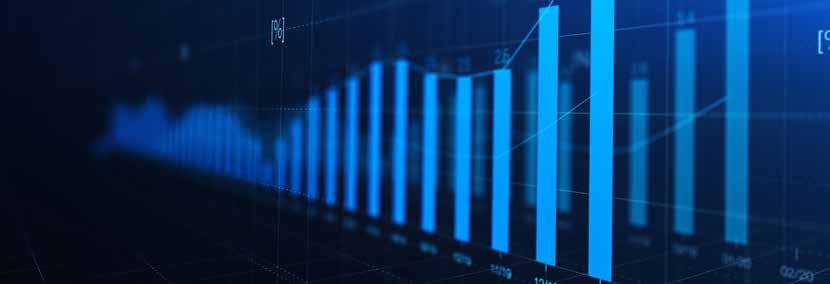
Inflation and stagflation, fueled by multiple injections of cash into Western economies post-Covid, pose a significant threat to the financial stability of aquaculture. Can fish farmers continue to consolidate, or expand if the cost of capital is above 10 percent? What effect does this have on facilities? The purchase of equipment?
As a result, industry consolidation may continue, favoring those with better financial access and advice. This commentary discusses the potential impacts that the global challenges outlined in Nouriel Roubini's book "MegaThreats: Ten Dangerous Trends That Imperil Our Future, and How to Survive Them" might have on the dairy industry. Key threats explored include inflation, stagflation, the Russia-Ukraine conflict, the new Cold War, climate change, and artificial intelligence. I emphasise the importance of adaptation, innovation, and leadership and encourage a positive outlook for aquaculturists in the coming years.
Russia-Ukraine conflict

The ongoing Russia-Ukraine conflict has already affected aquaculture costs. The combined damages and losses of the aquaculture sector correspond to nearly US$25.4 million. Fish farmers must continue to navigate these challenges to maintain profitability in a volatile market.
Climate Change
Government policies implemented to address overfishing will play a crucial role in shaping the fish industry’s future. Short-term impacts on aquaculture can include losses of production arising from extreme events, such as floods. Robani’s book describes how climate will change what we grow and where we grow which will be a critical matter to navigate as our oceans become more acidic and impact fish populations. Fish farmers will however continue to use technology for responsible management of the sector. As a renewable source, aquaculture has the power to restore environmental health and improve human wellbeing.
36 | September 2023 - International Aquafeed











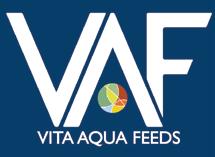



































































THE INNOVATIVE SOLUTION TO CLEANER FISH MANAGEMENT & SEA LICE CONTROL COMPLETE, TAILORED FEED BLOCK DIETS FOR LUMPFISH & WRASSE REDUCED IMPROVED Produced in the UK by www.vitaaquafeeds.uk • SEA LICE POPULATIONS • CATARACT PREVALENCE • AGGRESSION DURING FEEDING • ENERGY CONSUMPTION • STORAGE SPACE & COSTS • MEDICAL TREATMENTS • FISH HEALTH & WELFARE
MORTALITY RATES
STABLE, CONTROLLED GROWTH
LONGEVITY & EFFICACY
PRACTICAL FEEDING METHODS
DAILY OPERATIONAL COSTS World Leaders in Microwave Moisture Measurement Hydro-Probe XT Hoppers, chutes, belt conveyors Hydro-Mix XT-FS Mixers, conveyors, Ducting System Hydro-Mix XT-EX Certified for use in ATEX, IECEx and NEC/CSA Hazardous Locations (Dust) Hydro-Mix HT-EX Mixers, conveyors, Ducting System, High Temperature Non Food-Safe available Non EX available Non EX available enquiries@hydronix.com Contact us for more details hydronix.com Hydronix-Aquafeed-Advert Mar 2023 210x146mm.indd 1 28/02/2023 09:58 International Aquafeed - September 2023 | 37
•
•
•
•
•

Artificial intelligence and Robotics
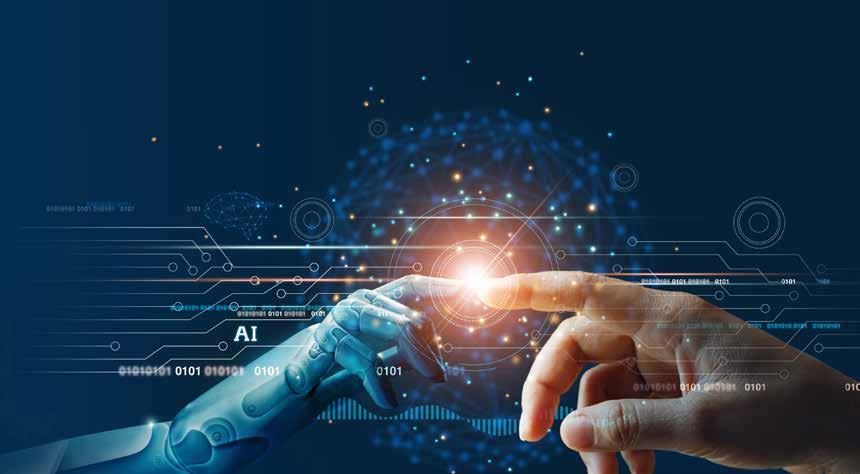

Robani is very pessimistic about the role of artificial intelligence, and robots, and their possible role in replacing humans in the workplace. AI and robots significantly improve efficiency, accuracy, and financial savings in aquaculture. Factories, particularly the processing of food, will especially be transformed by use of robotics and artificial intelligence. Robani’s contention is that if we don’t consider carefully how robots and artificial intelligence are implemented, we will end up with huge numbers of unemployed. Fish farmers should consider how AI will transform jobs, and the skills that workers need to gain to navigate these new agri-technology realities.
The new Cold War
The Chinese-U.S. trade conflict has far-reaching implications for global fish markets. China's influence on U.S. fish prices is often underestimated, with Chinese demand impacting price dynamics and competitors to the US on the global market. China is one of the five countries that drive high seas fisheries and transhipment with anywhere from 200,000 to 800,000 fishing boats, which is nearly half of the world’s fishing activity. The effect on world consumption and prices is demonstrable and the importance of world trade is clear: when China's economy sneezes, the fish markets are prone to catch a cold!
Robani’s other pessimistic predictions include the world’s aging populations, currency meltdowns, the end of globalisation. While all of these threaten the era of economic stability, Robani does include the Yogi Berra quip that it is ‘hard to make predictions, especially about the future’. Humans have shown the ability to overcome diversity through innovation, ingenuity and leadership. Hopefully, even in the face of these ten very real threats, aquaculture will overcome again.

International Aquafeed - September 2023 | 39
Something powerful happens when shared expertise, care and nutritional performance come together. Unrivaled solutions designed to advance your business forward. That is the transformational power of partnership.



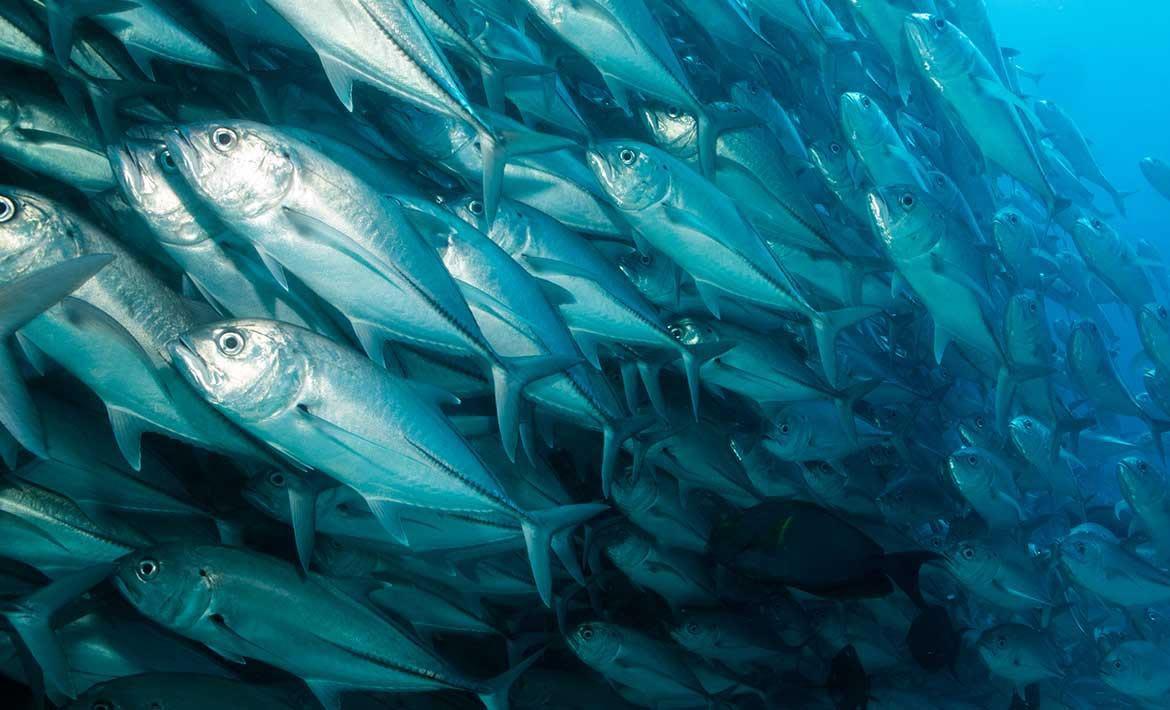
WWW.AQUARIUSLAWYERS.COM.AU +61 (02) 8858 3233 • Mariculture and Aquaculture leases • Aquaculture and mariculture disputes • Commercial fishery issues • Acquisition and ownership of fisheries • Registration of fishing rights • Defence of fisheries prosecutions • Seizure of fishing vessels • International fishing licenses • High seas fishing Legal business advice: Partner with us at zinpro.com #PowerOfZinpro Partnership. Performance.
Profit.
40 | September 2023 - International Aquafeed
The tech update
A-BIOMASS
Ace Aquatec
A-BIOMASS, by Ace Aquatec, an advanced underwater camera system, promises to transform the way fish farmers across the globe monitor and grade their fish stocks by using machine learning and artificial intelligence for real-time millimetre accuracy. The fully automated camera is far smaller and easier to deploy than many on the market, weighing in at just 8.5 kg, and has been proven to withstand and harshest environmental conditions, having been developed and tested in Scotland’s most northernly waters.
The camera system is Ace Aquatec’s latest addition to its suite of high-welfare technology products and offers fish farmers a convenient, reliable and cost-effective way to estimate fish biomass without handling or manual invention. The fully automated AI cameras use point cloud technology to track fish, simultaneously differentiating individuals from the shoal. Continuous measurement of fish size enables millimetre accuracy in the grading process and reduces feed waste, meaning less impact on the immediate environment and efficiency savings for farmers. The system can also be operated remotely so fish stocks can be monitored from anywhere in the world, reducing the need to be on site.
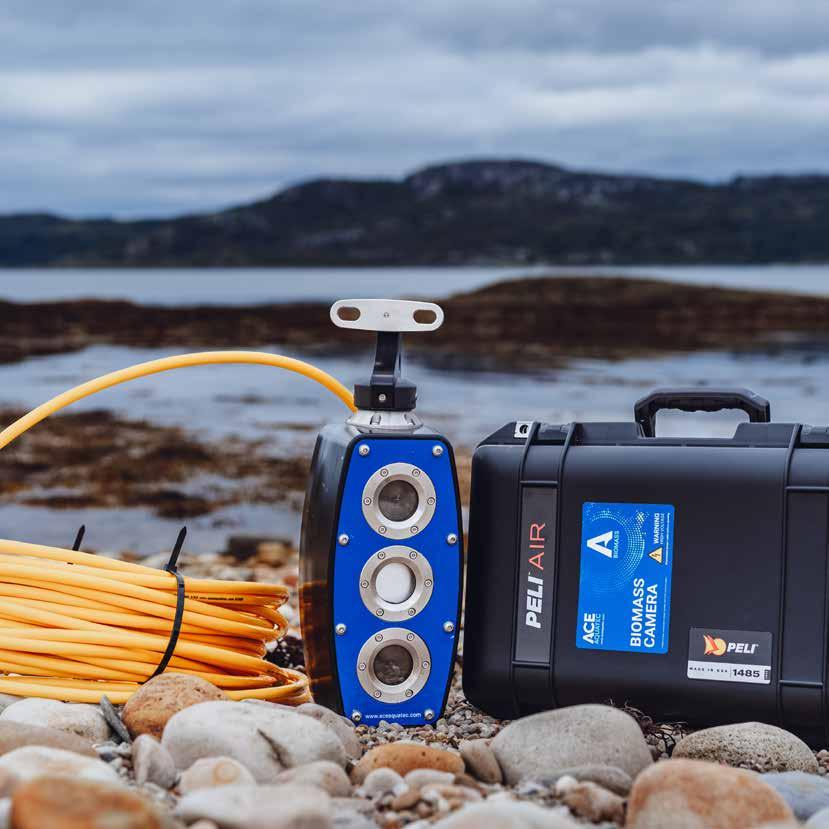
FISH FARMING
Welcome to 41 | September 2023 - International Aquafeed
TECHNOLOGY
Taking control of water treatment The sustainable way
by James Leigh, Head of Business Development, Evoqua Water Technologies, UK
Sustainability is a hot topic but as well as ensuring environmental and regulatory compliance, the focus of any sustainability programme should also be on solutions that deliver wider business benefits, including cost and operational efficiencies. And this is certainly true when it comes to the aquaculture sector and disinfection for water treatment. Getting the right technology solution is critical for environmental protection and the health of fish but it has the potential to offer much more.
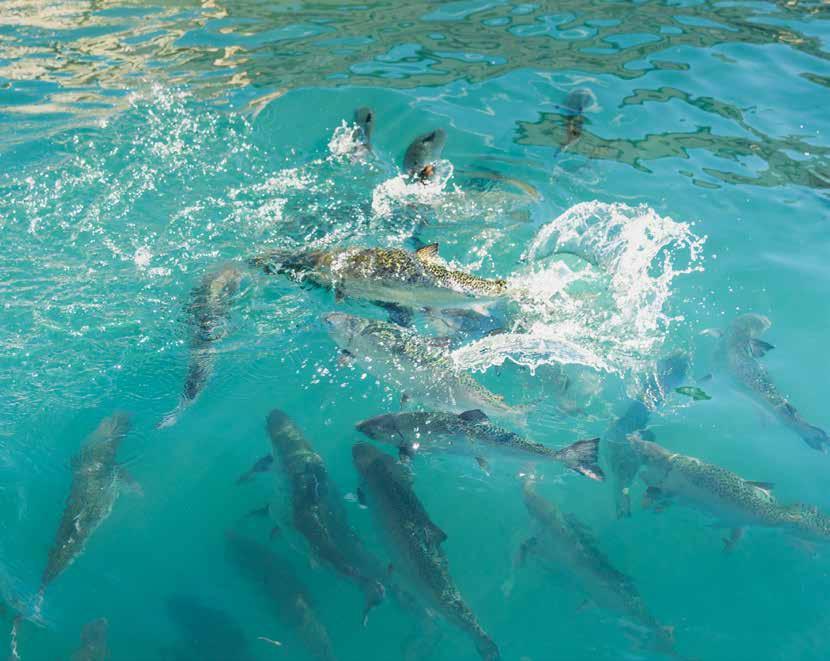
In any fish farming environment, effective filtration and disinfection is critical. It is essential to remove or control waste products for successful production, disease management and yield using effective biological and mechanical filtration and disinfection systems that recycle and treat the used water from aquatic farming. Two highly effective, proven methods of disinfection are ultraviolet (UV) and ozone.
Innovative technology that delivers more
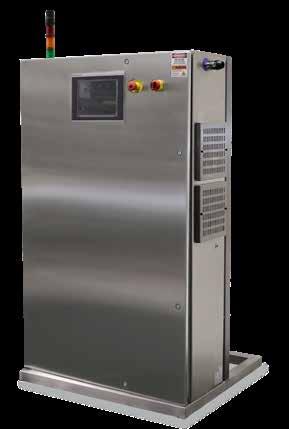
UV is one of the most highly effective and sustainable disinfection methods. It works by applying light in wavelengths that damage and destroy DNA of biological organisms. This prevents the build-up of harmful populations of heterotrophic bacteria and opportunistic pathogens. The effectiveness and efficiency of the UV disinfection unit depends on the turbidity of the water, size, and species of the target organism. Although UV is highly effective, it cannot inactivate 100 percent of bacteria. Therefore, UV is best used in combination with mechanical filtration that effectively removes organic matter from the water.
Beyond their disinfection performance, one of the great benefits of UV systems, such as Evoqua’s ATG™ UV branded Wafer™ system, is their sustainability credentials. They are low energy, and the high-quality lamps have a long operational life, minimising replacement costs. And, with large scale fish farming increasing, UV technology’s ability to disinfect water in one cycle provides advantages for
FISH FARMING TECHNOLOGY 42 | September 2023 - Fish Farming Technology
efficiency by increasing throughput.

When UV is combined with ozone technology, an aquaculture disinfection system can be strengthened further. Ozone is one of the most powerful commercially available oxidising agents. Oxidation and disinfection occur when ozone meets substances including bacteria, viruses, parasites, and algae that exist in fish farming systems. It breaks down long complex protein molecules and damages cell nucleic acids of microorganisms.
It works by ozone gas simply mixing into water creating the solution for disinfection. The gas quickly dissolves in water, contacts with wetted surfaces, and then decomposes back to oxygen in solution, effectively leaving no residuals in the treatment system.

Performance and wider operational and sustainability benefits make ozone and UV superior disinfection solutions. They are not only effective at removing pathogens and parasites but also reduce water usage by increasing recirculation rates, support farming growth levels and are chemical free and safe for the environment and operators. Importantly though, using industry-leading technology systems will reduce operating costs, minimise maintenance requirements and support ongoing sustainability initiatives.
A case in point: ozone disinfection
Ideal Fish, the only producer of branzino in the United States, operates a recirculating aquaculture system (RAS). Controlling the quality of the water is of utmost importance, as this process, left untreated, can create a breeding ground for virus and bacteria growth, as well as a generally poor environment for the fish to grow in. As the fish grow, they are graded and transferred to larger tank volume systems which then requires larger more complex disinfection and cleaning processes. The larger the fish grow, or the more biomass in the tank(s), the more waste is produced, ultimately further increasing the loading of suspended solids and dissolved nutrients both in the tanks and in the general system itself.
The team at Ideal Fish required an efficient and economical disinfection solution to improve water purity and create a more biologically efficient environment for growing a live product. Evoqua identified the solution was ozone technology. The micro flocculation of fine solids created by ozone was of importance in this application, as it will improve the farm’s particulate removal efficiency via their filtration process. Ozone will also change the characteristics of dissolved organic compounds (DOC) by oxidation and precipitation, making it easier to remove DOC by biofiltration and sedimentation.
Evoqua’s disinfection team provided one MNG8X34 Ozone Generator to meet the needs of Ideal Fish. The team at Ideal Fish saw a definite increase in water clarity and fish performance, enabling them to further
FISH FARMING TECHNOLOGY 43 | September 2023 - Fish Farming Technology
increase the growing and performance parameters with controlled and precise use of the ozone facility. Its operational parameters are now more concisely used for either individual or group tanks, due to the separate SEP systems capabilities and ramping up or down in percentage use requirements which have enabled Ideal Fish to have a more focused concise production control from the unit, than any previously utilised. With the unit’s compact modular design and easy to operate features, the solution will


Navigating the impact of climate change
Today, UV and ozone disinfection systems are also proving highly effective in supporting the aquaculture sector as it navigates the impact of climate change. In sea-based farming environments, such as recirculating aquaculture systems (RAS), global warming is increasing the number of parasites present, meaning new strategies for water disinfection are vital to protect operations and the environment.
The new Vibrio bacteria species found in UK waters is evidence of this. Research scientists from the University of Exeter have found the presence of a wider diversity of the bacteria. Species V. rotiferianus and V. jascida have never been found in UK waters before, and usually inhabit warmer waters. The presence of these two previously absent species in the region provide evidence that as sea-surface temperatures rise, UK waters are becoming increasingly hospitable for a wider variety of invasive bacteria and micro-organisms.
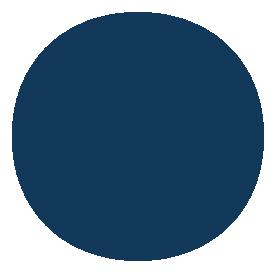
Looking ahead
It’s important not to overlook the importance of water treatment when it comes to sustainability. Whether the initial aim is to navigate the impact of growing parasite populations, improve fish welfare, or ensure environmental compliance – or all the above – we must prioritise innovation and the technology solutions that can deliver against these objectives and more. A sustainable future starts today. Partnering with the right treatment partner that has the experience, expertise, and advanced technology, not only supports environmental initiatives but also helps the aquaculture sector simplify operations, increase efficiency, and improve costs. It’s time to take action.
FISH FARMING TECHNOLOGY 44 | September 2023 - Fish Farming Technology
















The Packaging Group GmbH Gerberstraße 50 · 51789 Lindlar, Germany · www.the-packaging-group.com If you can think it we can pack it The Packaging Group (TPG) Visit our NEW YouTube channel and find your perfect fish food packaging solution HDG RB-600 FAWEMA FA 456 WOLF VPC
TECHNOLOGY SHOWCASE

Innovations this month
September 2023
In this dedicated Tech Showcase section of the International Aquafeed Magazine, we showcase technologies that are reshaping the way we approach aquafeed production and aquaculture practices by revolutionising feed production, fish health, and sustainability. If you would like your product or service to appear in this section in a future edition of International Aquafeed and Fish Farming Technology magazine, then please contact us at editorial@perendale.co.uk

A-BIOMASS™ by Ace Aquatec

A-BIOMASS™ is an advanced underwater camera designed to bring more efficiency and precision to biomass measurement and distributions of a range of fish species. Using the power of machine learning A-BIOMASS™ can help you gain an accurate insight into your pens without handling or manual intervention. Accurate weight estimation can lead to a better understanding of total biomass, which can help your farm stay within its stocking density quota.
The A-BIOMASS™ underwater camera helps farms more effectively monitor fish welfare, prevent mortalities, and provide transparency and traceability over the fish lifecyle and supply chain.

The system contains two stereoscopic cameras calibrated to take images synchronously. Through machine learning. Artificial Intelligence identifies fish and critical points, such as tail and fins, to measure fish height, weight, and length accurately. A-BIOMASS™ tracks multiple fish simultaneously, day or night, collecting significant amounts of data in a short period.
https://aceaquatec.com
HEX
A well proved design based on more than 30 years of experience. Innovative solutions have made this filter type the preferred choice of filters in most fish farms, especially in RAS where reliability and low maintenance requirements are vital for the performance of the fish farm. With Direct Driven Gear Wheels, the HEX Drum is very robust with no sudden stops and 95 percent efficiency due to cone wheels. It is built for seawater with corrosion resistant materials and comes with a PE sludge tray with dual slope to ensure sludge slides easily to the exit pipe. Ceramic nozzles for back-wash cover the full length of the filter, resulting in no moving parts and no wear out compared to steel. https://cmaqua.dk
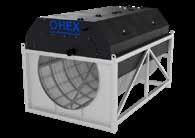
TwinLab-F
The TwinLab-F 20/40 scores highly due to it being a compact extrusion solution with integrated drive. This space-saving and economical solution texturises the widest range of different materials. Develop new formulas and standards or simulate processes exactly to scale. It is a standalone solution for food extrusion at lab scale as it modifies and texturise various materials, such as for example proteins, starch, fish feed, cereals and pasta.
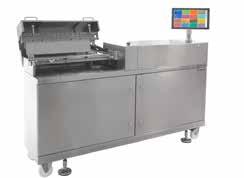
With a rotational speed of up to 1200 rpm, this extruder offers the user greater flexibility when it comes to energy input and throughput. What’s more, the cylinder is split horizontally and is hinged at both sides, which makes the segmented screws easily accessible. The sample is inserted and then extruded by the twin-screw extruder. During the analysis, sensors and controllers measure relevant values, such as temperature and pressure. www.brabender.com

more – Learn
Enroll in the 12-week Course
Learn
onsite
Drum Filter Model F by CM Aqua
20/40 by Brabender
FISH FARMING TECHNOLOGY Check out our website dedicated to fish farming technology
SHOWCASE
Fish Grader Helios 60 by Faivre Helios 60 grader combines speed with precision sorting. Helios 60 is a robust grader. It is also suitable for sea water farming. Its two sorting channels give it a high efficiency and a quick return on investment. The two channels give you the performance you need for the most rigorous grading.
The Helios 60 grader can be adapted to all needs. It is easily movable even on a damaged floor, thanks to its three large inflatable wheels. The two stainless steel jacks placed at each extremity of the machine can be used to raise the grader by up to 35 cm if necessary and to adjust the inclination of the grading plane precisely in order to improve the precision of your sorting.
Their Helios 60 grader offers precise manual adjustment of each size’s width in the outlet hopper. Large handles are used to slide a flap over a distance of about 30 centimetres and thus adjust the sorting precision without changing the vernier setting.The Helios 60 grader is equipped with two sliding flaps to adjust the machine’s three sizes. www.faivre-aqua.fr
www.onlinemillingschool.com
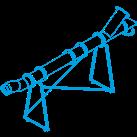
Salmon A-HSU by Ace Aquatec

The Humane Stunner Universal (A-HSU™) is at the forefront of responsible aquaculture. This award-winning in-water stunner is the perfect solution for high-welfare fish stunning and meets the increasing demands of consumers, retailers, and regulators. With its effective, safe, rapid, and humane stunning method, the A-HSU™ ensures that Atlantic salmon, Pacific salmon, trout, yellowtail, and most powerful fast-swimming fish are stunned in less than one second with minimal stress or handling prior to slaughter. Powerful salmonids thrash about when removed from the water, often resulting in stress and bruising. The award-winning A-HSU™ stuns the fish while they are still in water, providing a more efficient and humane way of harvesting compared to other methods. Salmon from well boats, pens or tanks are gently pumped into the A-HSU™, travel through a de-watering tube, and then into the stunner water, where they lose consciousness immediately. If salmon leaving the stunner are bled promptly, they stay unconscious until death. The A-HSU™ is suitable to install on boats or rafts for dead haul harvesting and land-based processing plants.

https://aceaquatec.com



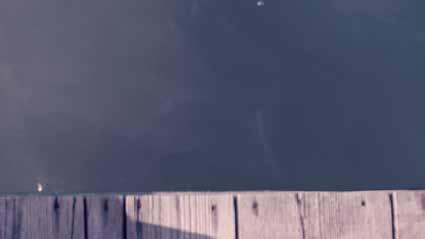
fishfarmingtechnology.net International Aquafeed - September 2023 | 47
Aquaculture case study
Hemp-based salmon feed

Rare Earth Global, the company behind the initiative and growers of industrial hemp for a range of sustainable products, has received more than UK£260,000 in funding from the UK Seafood Innovation Fund (SIF) for a full-scale research and development project which will include a two-month feed assessment. A feasibility study conducted last year set out to explore how hemp seeds could be integrated into the diets of farmed salmon in Scotland. The team tested two types of hemp meal against a range of factors such as digestibility, fish growth, and the effect on gut health, finding that the ingredient had a comparable nutritional profile with soy and fishmeal – the most common protein sources for feeds.
The next stage of testing involves monitoring how fish perform over the long term when fed hemp seed protein as part of their diet, with the company also supported by the Sustainable Aquaculture Innovation Centre (SAIC) and the University of Stirling’s Institute of Aquaculture. Mowi, the global producer of Atlantic salmon, will support the formulation and production of the feed while farmers in Angus and Aberdeenshire will grow the crops.
The research team is aiming to understand the viability of hemp meal protein for commercial inclusion and to discover whether an optimum composition can be identified that delivers the best nutritional results for salmon, as well as testing secondary ingredients used as part of the feed. Another element of the project will cover sustainability, identifying methods for hemp farmers, feed companies and seafood producers to measure the carbon footprint of the entire process.
Suneet Shivaprasad, director and co-founder of Rare Earth Global, said: “The first feasibility trial returned positive results for the viability of hemp seed protein as a core aquaculture feed ingredient, and we are now testing whether it could be included on a commercial scale. Further research will enable us to look at a
range of other factors over a longer time period, within the aim of demonstrating that this novel protein can be a success.
“Locally grown, plant-based ingredients are already more environmentally friendly than any imported soy or fishmeal but our zero waste approach to growing it also ensures that every part of the hemp plant is used for sustainable construction materials, bioplastics and bioenergy feedstocks.”
Up to two tonnes of hemp seed can be produced per hectare of the crop, and Rare Earth Global is working with a range of farming cooperatives and family run farms – including farmers in Scotland, Yorkshire, Lincolnshire and Hertfordshire – to develop the supply of the raw material throughout the UK.
Last summer, the UK government published its Hemp-30 roadmap – a 10-year strategy to make industrial hemp a major UK crop. It is estimated to add around UK£700 million to the economy and sequester or displace one million tonnes of carbon dioxide each year.
Monica Betancor, associate professor at the University of Stirling’s Institute of Aquaculture, said: “By conducting a twomonth feed trial we hope to prove that hemp protein can serve as a direct replacement for soy in terms of digestibility, nutrition and growth. From what we have seen already, it has only had a positive impact on the salmon involved in our first trials.”
Sarah Riddle, director of innovation and engagement at SAIC, said: “It is great to see the research team taking the development of a new plant-based feed to the next stages. There are opportunities here for new UK-based supply chains to emerge, reducing our reliance on imported ingredients and lessening the overall environmental footprint of aquaculture while increasing its economic contribution. It is also highly positive to see a company that is new to the aquaculture sector collaborating with world-class researchers and major producers to turn an innovative idea into a reality.”
A team of UK researchers is taking the next step towards using hemp seed as a sustainable protein source for Scottish salmon feeds, following the success of the first live trials.
CS 48 | September 2023 - International Aquafeed


























































































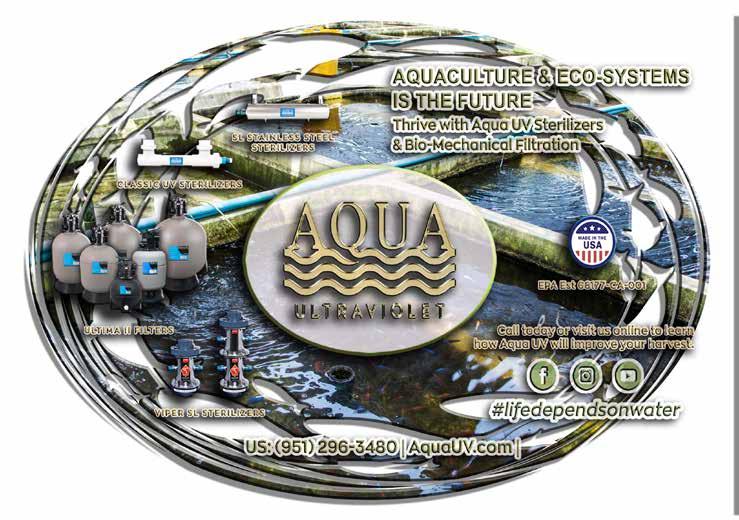
CS International Aquafeed - September 2023 | 49
Industry Events
Status updates for industry events amidst global effects of COVID-19

2023
2023 September
6 - 7
Seagriculture USA 2023
Portland, USA
https://seagriculture-usa.com
6 - 8
Expo pesca Acuiperu
Lima, Peru
www.thaiscorp.com
11 - 13
Seafood Expo Asia

Singapore www.seafoodexpo.com
18 - 21
Aquaculture Europe

Vienna, Austria www.aquaeas.org
2023 October
3-5
Victam LatAm

Sao Paulo, Brazil. https://victamlatam.com
3-5
pet-Aqua Conference


São Paulo, Brazil
https://victamlatam.com
October 3-4, 2023 São Paulo Brazil
Two half-day conferences for millers
FEED MILLING 20 23
MAXIMISED


October 5th, 2023
A CONFERENCE FOR FEED MILLERS
São Paulo, Brazil
11 - 13
Aquaculture Vietnam 2023
Ho Chi Minh City, Vietnam https://aquafisheriesexpo.com
23 - 26
Aqua Expo 2023
Guayaquil, Ecuador https://aquaexpo.com.ec
14 - 17
Fenacam
Natal, Brazil

www.fenacam.com.br
20 - 22
VIV MEA 2023
Abu Dhabi
www.vivmea.nl
19
Aquaculture Extrusion & Nutrition Conference



Abu Dhabi, U.A.E. bit.ly/aenc23
Aquaculture development and investment


Aquafeed Extrusion and Nutrition Conference will be held at VIV MEA 2023. It is a one-day conference centred on the topics of the production and extrusion of aquatic feed along with the nutrition and farming for fish and shrimps. Covering a variety of topics within aquafeed, this conference will provide knowledge, solutions, and research for everyone in the aquaculture.


2023 November
1 - 3
Aquaculture Taiwan
Taipei, Taiwan, www.aquaculturetaiwan.com
13- 16
AFRAQ - Aquaculture Africa

Lusaka, Zambia www.was.org
To sponsor please email: Tuti Tan – tutit@perendale.co.uk
For more information on the conference please email: Shannon Parsons – shannonp@perendale.co.uk
2023 December
12 - 15
AlgaEurope 2023 Prague

https://algaeurope.org
3 The Online Milling School LIVE!

São Paulo, Brazil
www.onlinemillingschool.com
5 FEED MILLING MAXIMISED Conference



São Paulo, Brazil
millingandgrain.com/event
/feed-milling-maximised-2023



2023 São
TRAINING FOR MILLERS www.onlinemillingschool.com
Live session: October 5,
Paulo Brazil
50 | September 2023 - International Aquafeed
☑ See The International Aquafeed team at this event


















































AQUA NOR 2023 Industry Events


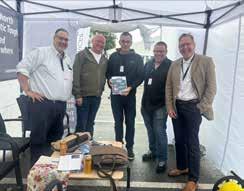
The Aqua Nor event held in Trondheim, Norway from September 21st to 24th, 2023, marked a significant milestone in the aquaculture industry's journey towards sustainability and innovation. The event garnered attention for its impressive visitor turnout, exceptional discussions, and memorable highlights that reaffirmed its status as the premier gathering for aquaculture professionals.

Aqua Nor 2023 outshined its previous editions with an impressive showcase of exhibitors and visitors. The event's popularity soared to new heights as it set a record for the highest number of visitors on a single exhibition day. Notably, major contracts were signed during the event, underlining Aqua Nor's role as a pivotal meeting place for both business and camaraderie.
Kristian Digre, CEO of the Nor-Fishing Foundation, and Kari

Wesley Verlez and Glenn Vercruyce of Trislot NV
International Aquafeed team with Cinzia Scavone of Zinpro Animal Nutrition

Advancing aquaculture excellence 52 | September 2023 - International Aquafeed
Tom Noble, Sales Director, Vita Aqua Feeds
Christian Raak, Grant Lovell, Mark Preece with Darren paris and Roger Gilbert
Steinsbø, Exhibition General, reflected on the success of Aqua Nor 2023. They said, “ here are several things that sum up this year’s Aqua Nor. We have had a fantastic atmosphere at this year’s exhibition- and we can see that everyone really enjoyed it. Many have signed major contracts – and this underlines Aqua Nor’s role as the industry’s most important meeting place – a place for both business and pleasure.
“This year we have also noticed that the level of the stands has been very good, and we appreciate that so many people have put a lot of work into making their stand, and thus Aqua Nor, even better.”

Highlighting Sustainable Growth
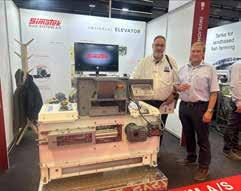
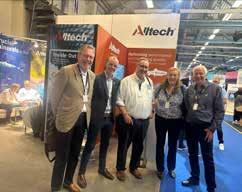
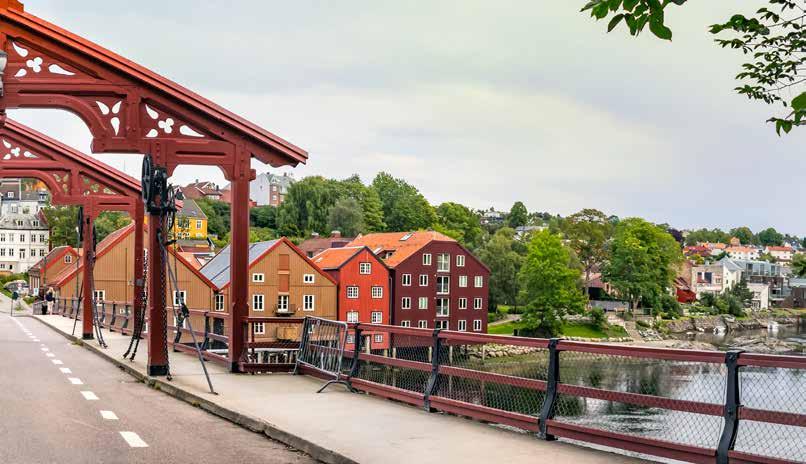
Sustainability emerged as a key theme throughout Aqua Nor 2023. The event focused on expanding aquaculture production while contributing to a greener shift in the industry. The professional conference ‘More food from the oceans. Contributing to the green shift through expanding aquaculture production’ attracted significant attention, demonstrating the industry's commitment to sustainable practices.
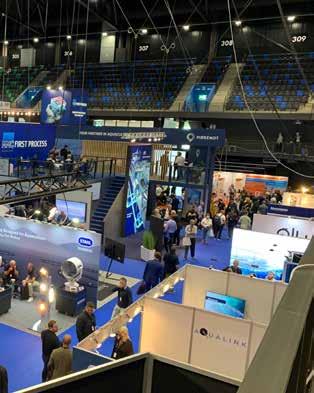
One of the most anticipated and heated discussions at Aqua Nor 2023 revolved around the ‘salmon tax,’ a topic that had

53 | September 2023 - International Aquafeed
Industry Events
Fabio Cervellione, Siri Johnsen and Bo Bendsen of dsm-firmenich with International Aquafeed team
Darren Paris with Christian Andersen of Simatek Bulk Systems
From Left Roger Gilbert, Aubert Faivre, Pierre-Etienne Collin and Darren
Roger Gilber and Darren Paris with Philip Lyon, Darren and Elisabeth and John Sweetman of Alltech
Industry Events
caused significant turbulence in the aquaculture industry earlier in the year. The panel consisted of key actors representing various stakeholders in the industry, including government officials, industry organizations, and analysis firms.
Led by Thorvald Tande, the editor of Norsk Fiskerinæring, the debate focused on the introduction and consequences of the resource rent tax, which had been implemented on January 1st, 2023.

The introduction and consequences of the resource rent tax took center stage, sparking a heated debate among panel members. The tax's impact on the aquaculture industry's investment ability and willingness was discussed, with varying perspectives from panelists representing government, industry organizations, and analysis firms.
International Engagement and Collaboration
Aqua Nor 2023 showcased the industry's global engagement, with a notable presence of international participants. The Scottish Pavilion's grand opening garnered attention, celebrating Scotland's significant role in the aquaculture sector. The diverse representation of exhibitors and visitors from various countries emphasized the event's international appeal.

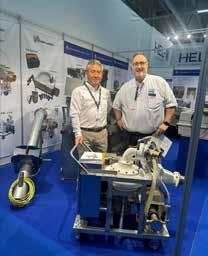

Recognition and Innovation

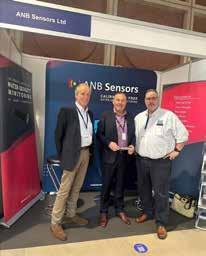
The event recognized exceptional contributions through awards and acknowledgments. The Best Stand award was presented to ScaleAQ / Moen Marin, highlighting their outstanding exhibition setup. The Innovation Award celebrated Sensor Globe's real-time sensor, designed to enhance fish welfare by collecting data on external factors affecting fish throughout their lifecycle.
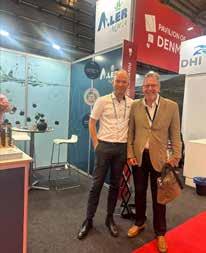
Student Camp and Emerging Talent
Aqua Nor 2023 demonstrated its commitment to nurturing young talent through the Aqua Nor Student Camp. Students engaged in exploring the theme ‘Green future for blue food,’ presenting innovative solutions to industry challenges. Five outstanding students were acknowledged as winners, receiving recognition and a reward for their commendable efforts.
Aqua Nor 2023 was an exceptional event that elevated the aquaculture industry's potential for growth, innovation, and sustainability. The event's record-breaking attendance, insightful discussions, and recognition of outstanding contributions showcased the industry's commitment to shaping a greener and more prosperous future. As Aqua Nor continues to evolve, its role as a global meeting place for aquaculture professionals remains pivotal in driving positive change within the industry. Readers can expect a longer report in the next edition with more information about the exhibitors and attendees.
Roger and Darren with Joonas Jaaskelainen of Arvotec
Michael Isakov, CEO, BioFishency with Darren Paris
Chris Coppen, Mark Pritchard of ANB Sensors with Darren Paris
Adrian Popescu from Kaeser and Sebastian Vaajakaari from UltraAqua with Darren
Roger Gilbert with Anders Bylling, CEO, Aller Aqua
54 | September 2023 - International Aquafeed
Darren Paris with Kenzo Matsusaka of Matsusaka Ltd















Industry Events Project1_Layout 1 04/09/2023 12:14 Page 1 VIV MEA 2023 ABU DHABI, U.A.E. 20-22 NOVEMBER INTERNATIONAL TRADE SHOW FROM FEED TO FOOD FOR THE MIDDLE EAST AND AFRICA WWW.VIVMEA.NL Register your visit now! Powered by: Co-located with: Organized by: VNU EUROPE WWW.VIV.NET Partner of Going mobile FISH FARMING TECHNOLOGY Claim a 12 month digital subscription FREE of charge. Simply visit: www.aquafeed.co.uk/subscription and set up an account using promo code: HNY23 Then download our app from your favourite app store and log in! International Aquafeed - September 2023 | 55
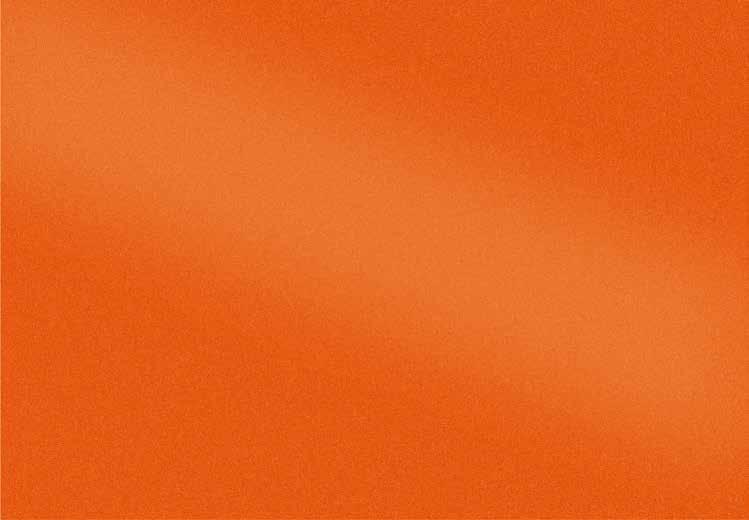
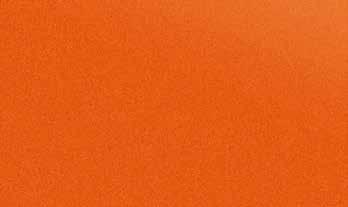












‘23 XIX NATIONAL SHRIMP FAIR NOVEMBER 14 - 17, 2023 - 2023 XIX INTERNATIONAL AQUACULTURE EQUIPMENT, PRODUCTS AND SERVICES TRADE SHOW XIX INTERNATIONAL SHRIMP FARMING SYMPOSIUM XVI INTERNATIONAL AQUACULTURE SYMPOSIUM XIX GASTRONOMIC SEAFOOD FESTIVAL WE HOPE TO SEE YOU IN THIS YEAR’S EDITION At the Natal Convention Center City of Natal - State of Rio Grande do Norte - Brazil. INFORMATION: WWW.FENACAM.COM.BR | FENACAM@FENACAM.COM.BR | +55 (84) 3231-6291 / +55 (84) 99612-7575 PROMOTION SUPPORT B E PA RT O F T H E M O ST I M P O RTA N T AQ UAC U LT U R E A N D S H R I M P FA R M I N G E V E N T I N L AT I N A M E R I C A ! Informa_AQ23_IAM_Sep.pdf 1 2023/8/7 上午 10:50:15 56 | September 2023 - International Aquafeed Industry Events

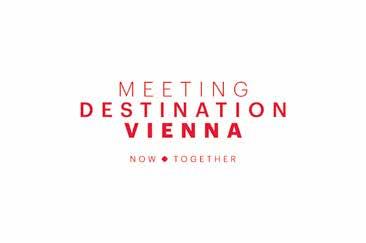

Victam Insights

October is next month! The countdown has started for the first Victam LatAm event in São Paulo, Brazil that will take place from 3-5 October 2023!
As the countdown to the highly anticipated event in Sao Paolo enters its final month, excitement is building among attendees from around the world. Victam LatAm 2023 promises to be bigger and better than ever before, with a line-up of world-class speakers, interactive workshops, and networking opportunities that are not to be missed.
One of the highlights of this event is the impressive line-up of speakers, who will be sharing their insights and expertise on a wide range of topics from process technology to ingredients and additives, it is all there!
In addition to the speakers, the event will feature a range of interactive workshops and breakout sessions held by our valued exhibitors, where attendees can dive deeper into specific topics and gain hands-on experience with the latest tools and technologies and new innovations are introduced. Whether you're looking to learn a new skill, expand your knowledge, or simply connect with like-
minded professionals within the animal feed industry, Victam LatAm 2023 is the place to be!
Of course, no trip to Sao Paolo would be complete without taking some time to explore the city and all it has to offer. From the bustling streets of the city center to the more laid-back neighbourhoods on the outskirts, there's something for everyone. You can visit museums, art galleries, and historical landmarks, or simply soak up the vibrant atmosphere and sample the local cuisine.
If you're planning to attend the event, we recommend that you start preparing in case you have not done that yet, to ensure that you get the most out of your experience. Be sure to book your accommodations, as hotels in the area are filling up quickly. You can find a list of recommended hotels on our website www.victamlatam. com, along with information about transportation options to and from the event.
We can't wait to see you at the Victam LatAm 2023 event next month. With so many exciting things in store, it's sure to be an unforgettable experience!
Conferences in São Paulo, Brazil
Perendale Publishers has partnered with VICTAM to host three conferences during the LatAm event in São Paulo, Brazil. On October 3-4, there will be two half-day conferences held, to hear from industry experts about Aquaculture feed and Petfood production. The ‘Pet-Aqua feed production conference’ covers these two areas that utilise similar techniques, and is designed for understanding the process, learning what is new, and possibilities in the area of pet and aquatic feed production.

As an additional session for our Online Milling School, the ‘OMS-Offline: Trouble shooting for all (Milling-Aqua-Pet)’ will take place on October 3 and will comprise of a discussion panel and a Q&A session. During this Off-Line Session, we will be awarding Certificates of Attendance to those who have completed one of the 2023 six-week courses and who are in attendance.

The ‘Feed Milling Maximised’ conference takes place on October 5. The seminar presents keynote presentations along with eight quick-fire updates on equipment and technologies used in modern-day feed milling that improve efficiencies while maximising output.

To register, visit https://victamlatam.com/en-us/conference-program/conferences

insights
VICTAM insights - September 2023 | 58
Andritz in the spotlight!
Andritz has played a vital role in making this event in Latin America possible, thanks to their innovative solutions and cutting-edge technologies that have helped to optimise the event's operations and ensure its success. Andritz is a key player in the animal feed industry, offering a wide range of innovative solutions and technologies for feed producers around the world. From raw material handling and grinding to pelleting and extrusion, Andritz's portfolio covers the entire feed production process. With a focus on efficiency, quality, and sustainability, Andritz helps feed producers optimise their operations and meet the growing demand for high-quality animal feed.
Navigating challenges

As the call for sustainability and cost-efficiency transcends borders and mere industry buzzwords, paradigms are shifting globally to accommodate present needs and expectations.
Gunnar Hallmann, Industry Director at ANDRITZ, states, "Energy conservation, sustainability, and process optimisation have fused into an inseparable trio, guiding our industry's course."
The urgency of the moment, driven by escalating energy costs, soaring raw material prices, and rippling environmental concerns, has prompted a collective search for innovative, energy-saving alternatives.
"In the face of these challenges, aqua feed manufacturers in Latin America are recalibrating their energy approach. For instance, 60 percent of the energy consumption in an aqua feed plant is used in the drying process. One of the solutions lies in harnessing underutilised excess heat – a potent yet often overlooked resource within production processes," explains Gunnar.
From excess heat to energy optimisation with preheated air
While not revolutionary, its premise – preheating air before entering the drying process – offers significant advantages. This approach leads to optimised energy utilization through elevated air temperature, enhancing moisture absorption and shortening drying cycles, resulting in substantial energy savings.
Michel Pereira, Global Application Manager at ANDRITZ, explains, "It's about reimagining energy – repurposing excess heat that often dissipates within production processes. This untapped potential becomes a catalyst for positive change."
Pre-heating air technology can seamlessly integrate with waste heat recovery systems, reutilising excess heat generated during production processes. Through the implementation of preheated air technology, aqua feed producers in Latin America can navigate the volatility of raw material prices and establish consistent operational costs. Furthermore, the method's impact extends to improved product quality, as controlled drying environments cultivate heightened excellence, ultimately resulting in increased customer satisfaction.
Incorporating resource optimisation in their own machines, ANDRITZ dryers feature heating zones and a controlled bed depth extending across the entire width of the dryer, providing precise temperature control for
uniform drying of each pellet. “The individual control of temperature and air flow in each drying zone, coupled with high energy efficiency, ensure consistent product quality and optimised operational costs,” says Michel. Committed to staying ahead and delivering the latest technologies to their customers, ANDRITZ experts are continuously developing improved processes and systems. "Currently, we are working on a new design that involves harnessing heat from the dryer exhaust through condensation, transforming vapor into liquid, and utilizing the released heat to pre-heat the air."
A vision of sustainable prosperity
With an eye on sustainable prosperity, ANDRITZ champions a holistic approach that goes beyond single equipment solutions to embrace complete plant solutions. Leveraging decades of experience and a global presence, ANDRITZ supports aqua feed manufacturers in identifying bottlenecks for heightened efficiency. Drawing from a diverse project portfolio across industries, ANDRITZ offers invaluable insights into the production process, fuelling ongoing improvement.
This comprehensive approach sets the stage for a future marked by value, safety, and renewed confidence in a thriving aqua feed sector. “As complete plant solutions providers, we aim to serve as a guiding light for our customers, empowering them to overcome operational challenges and navigate towards optimal costeffectiveness and efficiency from the project's inception to its completion,” says Andre Mello, Sales Manager at ANDRITZ.
A glimpse into the future
In line with a steadfast commitment to industry advancement, ANDRITZ will participate in the upcoming Extrusion Conference - Pet Food and Aqua Feed, part of VICTAM LatAm 2023, in Sao Paulo, Brazil. A highlight of this event will be the insightful session by Michel Pereira, who will shed light on the intricacies of energy optimization in aqua feed plants.
His expertise promises to offer a valuable perspective on enhancing efficiency while aligning with sustainability and cost-effective objectives. “Our presentation will reinforce our dedication to innovation, knowledge-sharing, and collaborative progress, as we collectively strive for excellence in the aqua feed production landscape,” says Michel.
VICTAM insights - September 2023 | 59
aquafeed.co.uk/web/companies

Welcome to the market place, where you will find suppliers of products and services to the industry - with help from our friends at The International Aquafeed Directory (published by Turret Group).
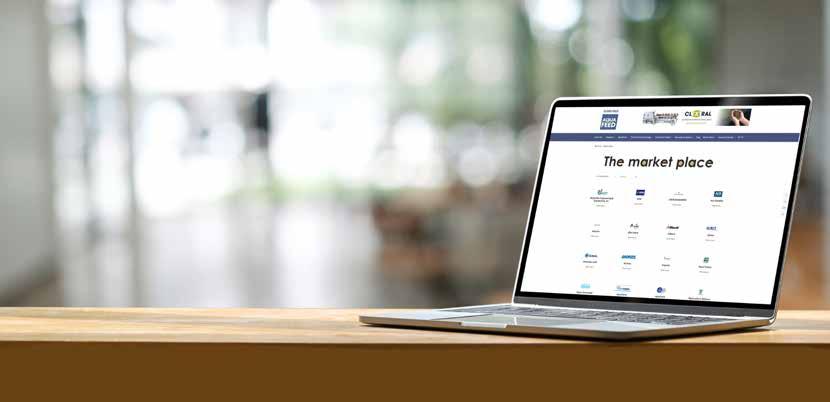
Aerators
Faivre
+ 33 3idah 81 84 01 32
www.faivre.fr
PROFILE: aqfeed.info/e/1603
Air products
Kaeser Kompressoren
+49 9561 6400
www.kaeser.com

PROFILE: aqfeed.info/e/1035
Additives
DSM
+43 2782 8030
www.dsm.com
PROFILE: aqfeed.info/e/1605
Jefo
+1 450 799 2000
https://jefo.ca

PROFILE: aqfeed.info/e/1607
Liptosa
+34 902 157711
www.liptosa.com

PROFILE: aqfeed.info/e/1608
SAS Laboratories Phode

+33 5 63 77 80 60
www.phode.com
PROFILE: aqfeed.info/e/1644
Analysis
Romer Labs

+43 2272 6153310
www.romerlabs.com
PROFILE: aqfeed.info/e/1610
Bulk storage
TSC Silos
+31 543 473979
www.tsc-silos.com

PROFILE: aqfeed.info/e/1612
Conveyors
Cablevey Conveyors
+1 641 673 8451
https://cablevey.com
PROFILE: aqfeed.info/e/1613
Vigan Enginnering
+32 67 89 50 41
www.vigan.com
aqfeed.info/e/1648
Computer software
Inteqnion
+31 543 49 44 66
www.inteqnion.com

PROFILE: aqfeed.info/e/1277
Coolers & driers
Bühler AG
+41 71 955 11 11
www.buhlergroup.com
PROFILE: aqfeed.info/e/1614
FAMSUN
+86 514 85828888
www.famsungroup.com

PROFILE: aqfeed.info/e/1034
IDAH
+866 39 902701
www.idah.com

PROFILE: aqfeed.info/e/1615
Wenger Manufacturing +1 785-284-2133



www.wenger.com
PROFILE: aqfeed.info/e/1616
Drum filters
Faivre + 33 3 81 84 01 32
www.faivre.fr
PROFILE: aqfeed.info/e/1603
Faivre is a French company, and one of the world leaders in the conception, manufacture and production of aquaculture machines.
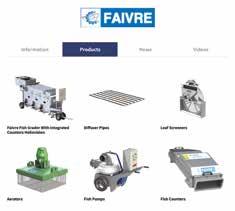



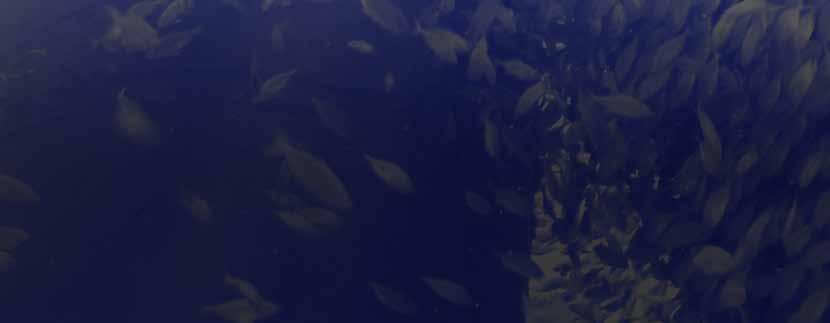
Since 1958, thanks to their knowledge of the market and strong experience in aquaculture, Faivre has developed high quality products to satisfy all of your needs, from one product to the full installation. Strength, effectiveness and simplicity are the qualities of their production.
aqfeed.info/e/1603
Tapco Inc +1 314 739 9191 www.tapcoinc.com aqfeed.info/e/1654 60 | September 2023 - International Aquafeed
Elevator buckets
Elevator & conveyor components
4B Braime +44 113 246 1800
www.go4b.com
aqfeed.info/e/1655

Enzymes
DSM +43 2782 8030
www.dsm.com
PROFILE: aqfeed.info/e/1605
Equipment for sale
ExtruTech Inc









+1 785 284 2153
www.extru-techinc.com

PROFILE: aqfeed.info/e/1618
Extruders
Almex

+31 575 572666
www.almex.nl
PROFILE: aqfeed.info/e/1279
Buhler AG
+41 71 955 11 11
www.buhlergroup.com
PROFILE: aqfeed.info/e/1614
IDAH +866 39 902701
www.idah.com
PROFILE: aqfeed.info/e/1615
Ottevanger +31 79 593 22 21
www.ottevanger.com
PROFILE: aqfeed.info/e/1621
Wenger Manufacturing

+1 785-284-2133
www.wenger.com
PROFILE: aqfeed.info/e/1616
Zheng Chang
+86 2164184200
www.zhengchang.com
PROFILE: aqfeed.info/e/1623
Feed and ingredients
Adisseo
+33 1 46 747104
www.adisseo.com

PROFILE: aqfeed.info/e/1624
Aller Aqua
+45 70 22 19 10
www.aller-aqua.com

PROFILE: aqfeed.info/e/961
Alltech
+44 1780 764512
www.alltechcoppens.com
PROFILE: aqfeed.info/e/1625
Anpario
+44 1909 537 380
www.anpario.com

PROFILE: aqfeed.info/e/1626
Biorigin
www.biorigin.net
PROFILE: aqfeed.info/e/1627
GePro
+49 54415 925252
www.ge-pro.de aqfeed.info/e/1656
Grand Fish Feed
+202 20 650018
www.grand-aqua.com
PROFILE: aqfeed.info/e/1628
Jefo
+1 450 799 2000
https://jefo.ca

PROFILE: aqfeed.info/e/1607
Liptosa
+34 902 15 77 11
www.liptoaqua.com
PROFILE: aqfeed.info/e/1608
Phileo (Lesaffre animal care)

+33 3 20 81 61 00
www.lesaffre.fr
PROFILE: aqfeed.info/e/1629
Feed Mill
TekPro
+44 1692 403403
www.tekpro.com

PROFILE: aqfeed.info/e/1631
Tietjen Verfahrenstechnik GmbH
+49 4106 6333 0
www.tietjen-original.com
PROFILE:
Van Aarsen International
+31 475 579 444
www.aarsen.com
PROFILE: aqfeed.info/e/1632
Fish counters
Faivre
+ 33 3 81 84 01 32
www.faivre.fr
PROFILE: aqfeed.info/e/1603
Fish Graders
Faivre + 33 3 81 84 01 32
www.faivre.fr



PROFILE: aqfeed.info/e/1603
Fish pumps
Faivre + 33 3 81 84 01 32 www.faivre.fr PROFILE: aqfeed.info/e/1603
Grinders
Grand Fish Feed +202 20 650018




www.grand-aqua.com
PROFILE: aqfeed.info/e/1628
Hammermills
Dinnissen BV +31 77 467 3555
www.dinnissen.nl
PROFILE: aqfeed.info/e/1633
Tietjen Verfahrenstechnik GmbH
+49 4106 6333 0
www.tietjen-original.com
PROFILE:
Moisture analysers
Hydronix +44 1483 468900
www.hydronix.com

PROFILE: aqfeed.info/e/1634
Packaging
FAWEMA / The Packaging Group

+49 22 63 716 0
www.fawema.com
PROFILE: aqfeed.info/e/1635
Paddle Mixer
Anderson www.andersonfeedtech.com aqfeed.info/e/1658
IDAH
+866 39 902701
www.idah.com
PROFILE: aqfeed.info/e/1615
Palatability enhancers
Symrise

https://aquafeed.symrise.com

PROFILE: aqfeed.info/e/1739
Pellet mill
IDAH
+866 39 902701
www.idah.com
PROFILE: aqfeed.info/e/1615
PTN
+31 73 54 984 72
www.ptn.nl
PROFILE: aqfeed.info/e/1636
Plants
Buhler AG
+41 71 955 11 11
www.buhlergroup.com
PROFILE: aqfeed.info/e/1614
Dinnissen BV +31 77 467 3555
www.dinnissen.nl
PROFILE: aqfeed.info/e/1633
FAMSUN
+86 514 87848880
www.muyang.com
PROFILE: aqfeed.info/e/1034
Ottevanger +31 79 593 22 21
www.ottevanger.com
PROFILE: aqfeed.info/e/1621
Zheng Chang +86 2164184200
www.zhengchang.com

PROFILE: aqfeed.info/e/1623
Pulverisers
IDAH
+866 39 902701
www.idah.com




PROFILE: aqfeed.info/e/1615
To include your company in the International Aquafeed market place in print, and a company page on our website contact Tuti Tan +44 1242 267700 • tutit@perendale.co.uk
To visit the online market place visit: www.aqfeed.info/e/1130

61 | September 2023 - International Aquafeed
•
•
•
•
•







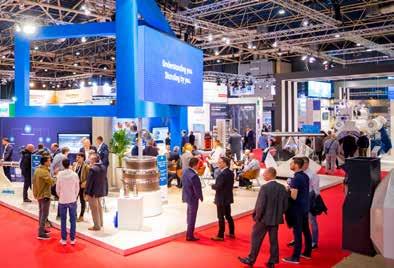
OCTOBER 2023 NEW! SÃO PAULO BRAZIL
AMERICA’S
DEDICATED EVENT FOR THE ANIMAL FEED AND GRAIN PROCESSING INDUSTRIES
3-5
LATIN
LARGEST
Animal Feed
Agua Feed
Pet food
Poultry feed
•
Flour milling
Grain processing, handling & storage MORE INFORMATION � NICKMOUTHAAN@VICTAM.COM � +31 6 2126 4398 � WWW.VICTAMLATAM.COM
INFORMATION
the QR code or visit victamlatam.com FOUNDING COMPANIES
MORE
Scan
Probiotics
DSM +43 2782 8030
www.dsm.com
PROFILE: aqfeed.info/e/1605
Royal DSM is a global, purpose-led company in Health, Nutrition & Bioscience, applying science to improve the health of people, animals and the planet. DSM’s purpose is to create brighter lives for all. DSM’s products and solutions address some of the world’s biggest challenges while simultaneously creating economic, environmental and societal value for all its stakeholders - customers, employees, shareholders, and society at large. DSM and its associated companies employ approximately 23,000 people around the world and deliver annual net sales of about €10 billion.
DSM use their bright science to deliver positive transformations at scale for as many people as possible today and for generations to come, operating within the constraints of the world’s finite resources. DSM aim to redefine how they live and work in order to create a fairer, more prosperous and more sustainable society.
In Animal Nutrition and Health
The DSM Animal Nutrition and Health business group offers customers a true end-to-end portfolio of products, solutions and services for sustainable and profitable animal farming. The company’s three dedicated business lines cover Precision Services, Performance Solutions + Biomin® and Essential Products.

Precision Services
Greater precision in animal farming is key to a more sustainable and profitable future. Their Precision Services use the latest data analytics and diagnostics to improve animal health, lifetime performance, resource use and environmental footprint — while mitigating risks and unlocking more value. Improving the sustainability and profitability of animal farming is secured with, aqfeed.info/e/1605
Phytogenics
Delacon
RAS Equipment
Fish Farm Feeder
PROFILE: aqfeed.info/e/1638
FishFarmFeeder is a company founded in 2008 that manufactures feeding systems for aquaculture with a complete catalog of feeders that cover all stages of the fish's life: hatchery, pre-grower and grow-out, both on land and at sea.
FishFarmFeeder’s mission is to:
• Offer globally specialized solutions only in the field of feed automation for aquaculture. Contribute to a sustainable aquaculture helping to optimize production and improving fish welfare.


• Respond to the needs of automation in the feeding of all stages of the fish's life.
• Develope a profitable, reliable, accurate and safe technology.

Facilitate integration with other existing technologies in aquaculture such as sensors, software aqfeed.info/e/1603

Silos
RAS system
Aqua Ultraviolet +1 952 296 3480
www.aquauv.com

PROFILE: aqfeed.info/e/1639
FAMSUN
+86 514 85828888
www.famsungroup.com
PROFILE: aqfeed.info/e/1034
TSC Silos +31 543 473979
www.tsc-silos.com

PROFILE: aqfeed.info/e/1612
Vacuum
Dinnissen BV +31 77 467 3555
www.dinnissen.nl
PROFILE: aqfeed.info/e/1633
Weighing equipment
Ottevanger +31 79 593 22 21
www.ottevanger.com
PROFILE: aqfeed.info/e/1621
Yeast products
Leiber GmbH +49 5461 93030

www.leibergmbh.de
PROFILE: aqfeed.info/e/1640
Phileo (Lesaffre animal care) +33 3 20 81 61 00

www.lesaffre.fr
PROFILE: aqfeed.info/e/1629
For more information about our market place - please view or download our 2023 media kit
https://aqfeed.info/e/1529

+43
732 640 531 414 www.delacon.com PROFILE: aqfeed.info/e/1637
+34 886 317 600 www.fishfarmfeeder.com
63 | September 2023 - International Aquafeed
the interview
Kevin Quillien, Co-founder and CTO, Krucial, UK
Kevin Quillien is co-founder and CTO of satellite-enabled communications provider Krucial, where he is responsible for the development of Krucial’s innovative technology.
Kevin has a successful track record of delivering complex projects in the fields of astronautics, satellite systems, communications (TT&C), R&D, digital transformation, and product delivery. His latest mission is to use space technology to end the geographical divide between those businesses that can access connectivity and those that can’t.
Krucial currently works across a number of key verticals, including aquaculture, and has a suite of remote monitoring solutions for the sector. It has deployed technology across several aquaculture operations, including with Mowi to support accurate and continuous monitoring of key environmental parameters. At Krucial, Kevin steers technological strategy and leads on product R&D, delivery and implementation.
You have a rich career in the aquaculture sector. What initially lead you to this field?
My path into the aquaculture sector has been quite an odd one. My background is in the space industry, and I spent most of my early career designing and building satellites for a variety of customers.
When my co-founder and I started Krucial, we did so because we saw the huge progress being made developing infrastructure in space, particularly in telecommunications, and realised that someone needed to bring all this technology down to Earth - to turn it into solutions that can solve real problems for people around the world. We developed an early prototype of what would become our core technology, were introduced to aquaculture and quickly fell in love with the sector. Having seen first-hand the immense effort that goes into getting high quality seafood products on to people’s plates and realising the potential for technology to benefit the industry, we started working with the sector to develop our Connected Seafarm solution.
What are some key challenges or trends currently impacting the aquaculture industry?
It’s a hugely exciting time for the aquaculture sector; we’re all acutely aware that aquaculture is vital to feeding a growing global population without depleting our already threatened oceans, so the sector needs to be bold and ambitious as it seeks to grow sustainably.
To succeed, innovation is a necessity – and that’s one of the key trends we’re seeing. Whether it’s the discussion around deep water farms, semi- and fully enclosed offshore pens, or centralisation of operations across entire regions, technology is set to play a central role in unlocking future progress by providing tools and capabilities to producers and their personnel. As an enabler for this technology, we’re excited for the role Krucial can play on this mission.
How does Krucial contribute to the advancement of sustainable aquaculture?
Krucial’s Connected Seafarm is a connectivity platform which enables digital technologies by ensuring data flows at all times – a solid foundation that reduces risk for producers and users and acts as a major catalyst for the adoption of cutting-edge innovation across the sector. Data is moved via cellular and multiple satellite backhaul - switching automatically depending on availability, meaning that even in extreme weather or further offshore,
where connectivity has traditionally been an obstacle, farmers still have an overview of their operations.
The Connected Seafarm provides mission-critical data on environmental and asset conditions and can even deploy a suite of algae bloom monitoring sensors which combine with other datasets on an insights platform to enable early detection of blooms.
Another use of the Connected Seafarm is to support remote feeding using low-latency video and feed controls. This service allows management of feeding even on offshore sites, with users able to control things from their office or even their own home hundreds or thousands of miles away. Using Krucial’s connectivity infrastructure means no farm is out of reach – and can save the industry millions in wasted feed, as well as boosting fish welfare and sustainability.
What career opportunities and pathways do you see emerging in the aquaculture industry in near future?
As companies look to new advanced solutions, aquaculturespecific technology careers will become more common, with more and more sensors, analysis tools and green tech coming to market. As a forward-looking sector, providing opportunities to the next generation of professionals from environmental scientists to software engineers is critical – and fostering a sense of collaboration will see a huge opportunity for the sector as it continues to grow.
What in your opinion is the worst impact the pandemic had on the aquaculture industry?
Aquaculture is hugely important to feeding the world and so had to keep going even as other industries stopped – but the impacts were felt, nonetheless. That’s where Krucial’s technology can help – by enabling fully remote monitoring and management.
Where do you think the industry will be by 2050?
Aquaculture will continue seeking sustainable solutions to the issues facing the industry and the wider water environment. While the world must tackle climate change, aquaculture can be at the forefront of doing so.
Better tech will result in more in-depth monitoring of conditions, a greater understanding of fish welfare and more measures to tackle issues including algal blooms - and Krucial will be there to support the sector as it does today.
64 | September 2023 - International Aquafeed

International Aquafeed - September 2023 | 65
THE INDUSTRY FACES
Ace Aquatec welcomes new Chief Technology Officer

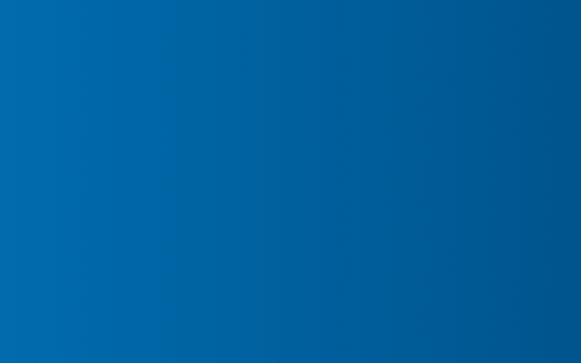
Ace Aquatec, the award-winning aquaculture technology company, has announced the appointment of Keith Davidson as Chief Technology Officer, who brings with him a wealth of experience leading global technology teams.

Having managed teams across the USA, Canada, India, China, Europe and Asia, Keith has worked with technology companies at every stage, from start-ups to multinational corporations. A deep curiosity for all things science and technology led him to the role and his extensive experience of aligning technology strategies with overall business goals will support Ace Aquatec to achieve its aim of developing world-class ethical technology for the growing global aquaculture sector.
Speaking about his new appointment, Keith Davidson said: “There are few professional opportunities that come along where you have the chance to work across almost every engineering discipline. Ace Aquatec products span mechanical, electrical, electronic, software and AI and as a technologist and engineer at heart this is an ideal opportunity to work in a field where technology is truly used for good. I plan to take this opportunity to build on the fantastic work already being done by Ace Aquatec’s world class technology team to provide fully integrated intelligent aquaculture products that support our customers to operate efficiently and humanely.”
Nathan Pyne-Carter, CEO of Ace Aquatec said: “We’re thrilled to welcome Keith to the executive team and everyone at Ace Aquatec is looking forward to working with him on the further development of our high-welfare aquaculture technologies. Keith’s core principles clearly align with our ethos, and we are delighted he is joining at a time of growth for the company and sector as a whole.”
Dr Alejandro Gutierrez spearheads CAT’s Breeding Leadership
To meet the escalating demand for genetic services while maintaining their client-focused approach, CAT has announced the appointment of Dr Alejandro Gutierrez as the Director of Breeding. Alejandro will lead the breeding and genetic services team, guiding CAT in expanding its portfolio of clients and breeding services.
Dr Gutierrez has spent more than a decade conducting research and leading teams in the fields on genomics, genotyping and selective breeding. His experience spans numerous species and his research has left a positive mark on the scientific community.
In response to Dr Gutierrez’s new position, Dr Klara Verbyla, Vice President of Genetic Improvement, says, “We are delighted with the appointment of Alejandro as the Director of Breeding. His role underscores the continuous rapid growth of the CAT breeding team in response to industry requests and the need for a dedicated leader to guide and drive the team forward. Alejandro has exceptional technical expertise in both applied breeding and genomics with demonstrated experience in people leadership.”
Dr Gutierrez echoes this positive assessment, stating, “I am very happy to be joining the team at CAT. I look forward to directly contributing to the delivery of world-class breeding and genetic services, to help propel growth and efficiency in the aquaculture sector.”
In the face of rising costs and evolving consumer demand, aquaculture producers are under pressure to find ways to feed the world more efficiently. The CAT breeding team rises to this challenge with a commitment to deliver genetic improvement while upholding environmental considerations to ensure sustainable nourishment for a growing global population.
Devenish expands international aquaculture team with key appointment
Global agri technology company Devenish has expanded its international aquaculture team with the appointment of Dr Antonios Chalaris as Aqua Business Development Manager. Headquartered in the UK and trading in over 40 countries, Devenish is recognised as a leading provider of animal nutrition solutions including premix and feed additives that are designed to improve both animal and human health. With over 70 years’ experience in the pig, poultry, ruminant and companion sectors, the company has recently expanded into the aquaculture market.
Dr Antonios Chalaris joins Devenish from a global aquaculture business where he was a project manager. He has over 13 years’ commercial and R&D aquaculture experience on fish hatchery production and development of fish feeds across the UK and internationally.



A key part of Devenish’s growing aqua division, Antonios will be responsible for spearheading sales growth and fostering relationships with new and existing customers in the aqua division. He will be supported by the wider Devenish international and technical teams.
Managing Director of Devenish International, Ian Atterbury explains: “Aquaculture is the fastest-growing food system in the world, and with the global population rapidly increasing, the need for nutritious and sustainably produced food is greater than ever. It represents a huge opportunity for Devenish as we have a number of core technologies and products that can be adapted for the aquaculture market.
66 | September 2023 - International Aquafeed
Since 1958, Faivre has developed and manufactured high quality equipment for the aquaculture industry.



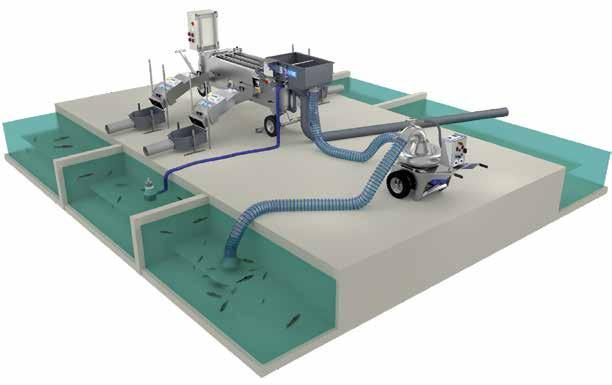

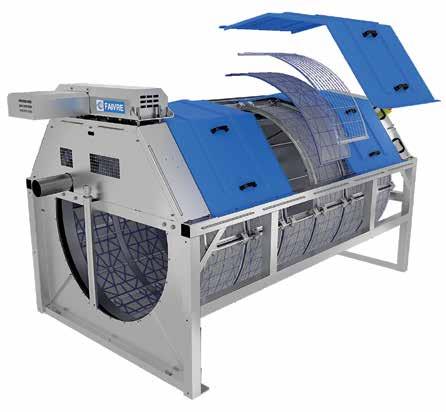

A complete range of filters, built to handle from 3 l/s to 1200 l/s

=
NEW Spiderplate ® www.faivregroup.com

Available now
15 different packs, made to manage fish from 1g. to 3,5kg.
FAIVRE G roup l 7 rue de l’industrie l 25110 Baume-Les-Dames l France TRUSTED EXPERIENCE SINCE 1958 DRUM
FILTERS
GRADING PACK
+ +







 Professor Simon Davies
Professor Simon Davies



















































































































 by Prof Simon J Davies, Emeritus and Adjunct Professor School of Natural Sciences and Ryan Institute, University of Galway, Ireland
by Prof Simon J Davies, Emeritus and Adjunct Professor School of Natural Sciences and Ryan Institute, University of Galway, Ireland
















































































































































































